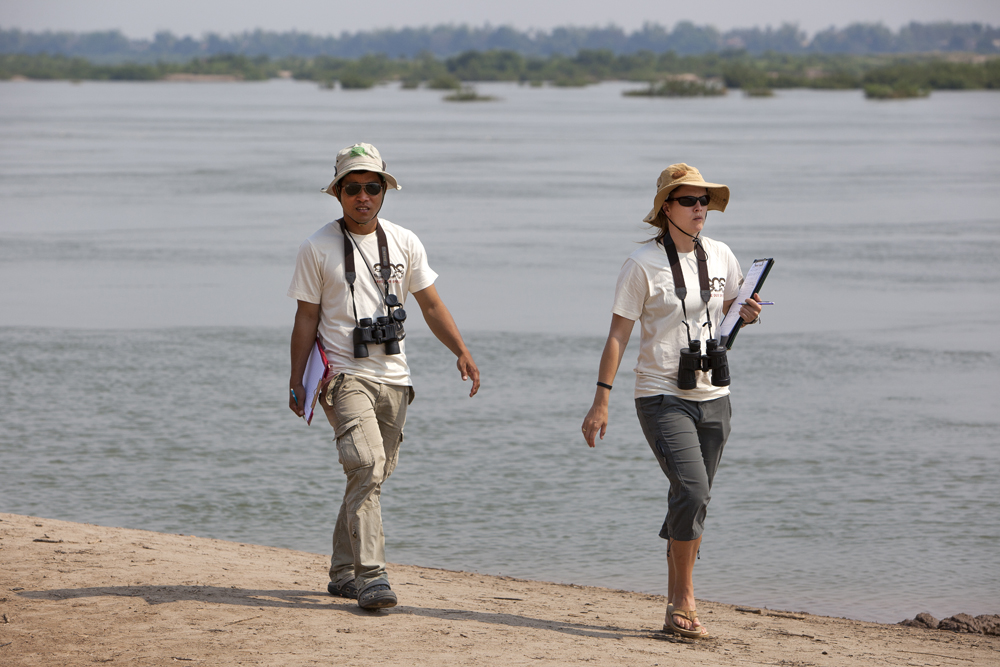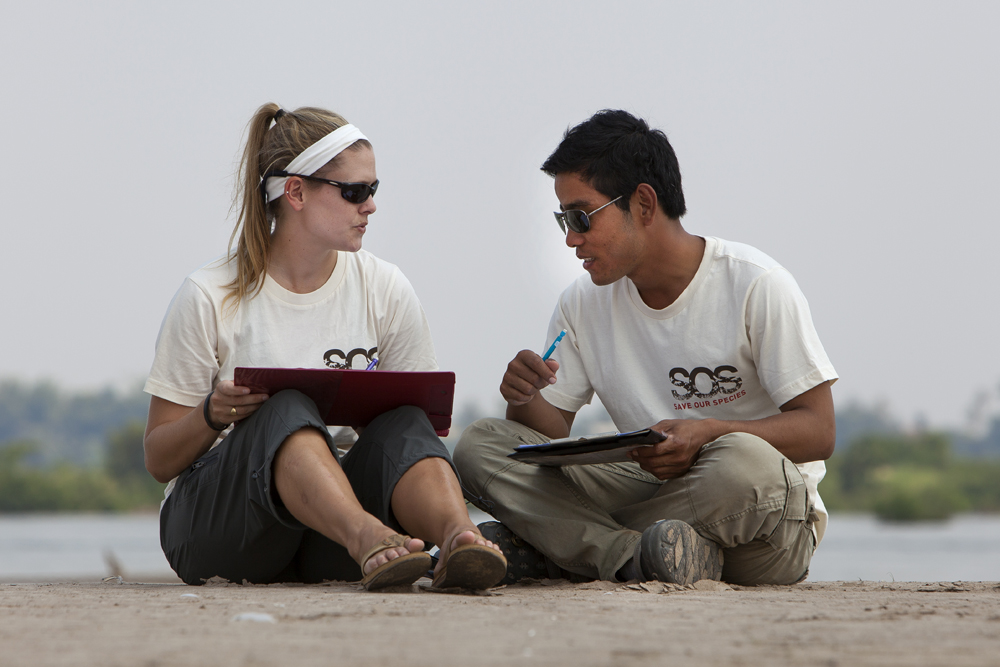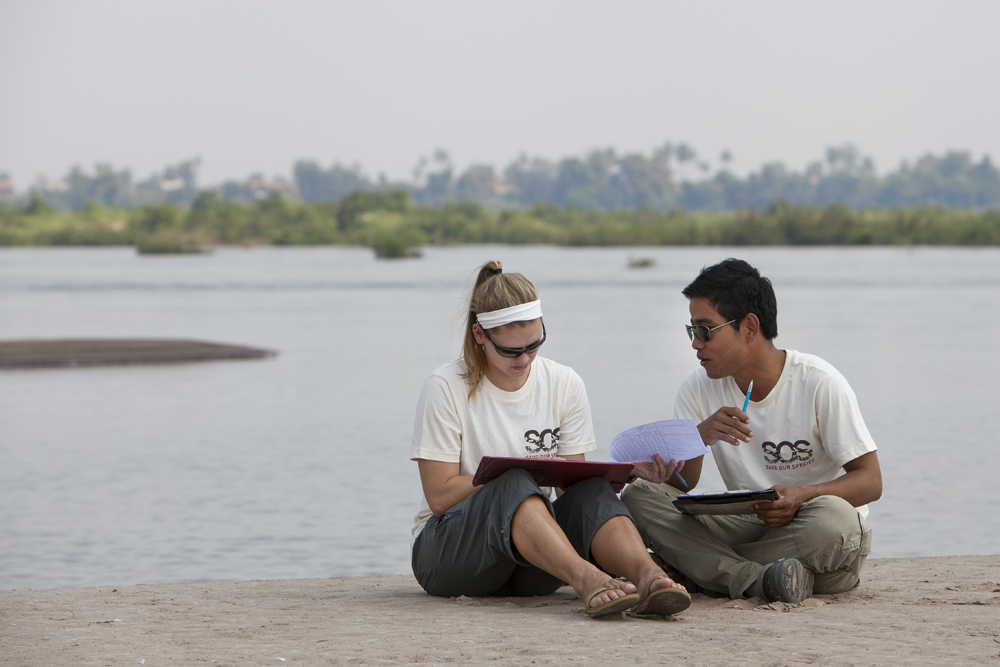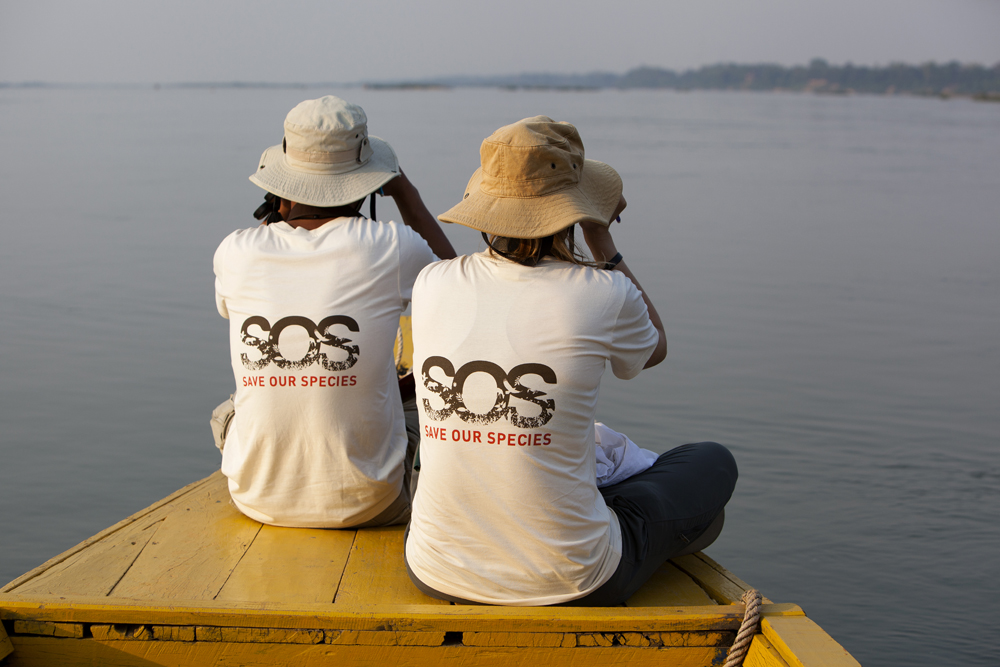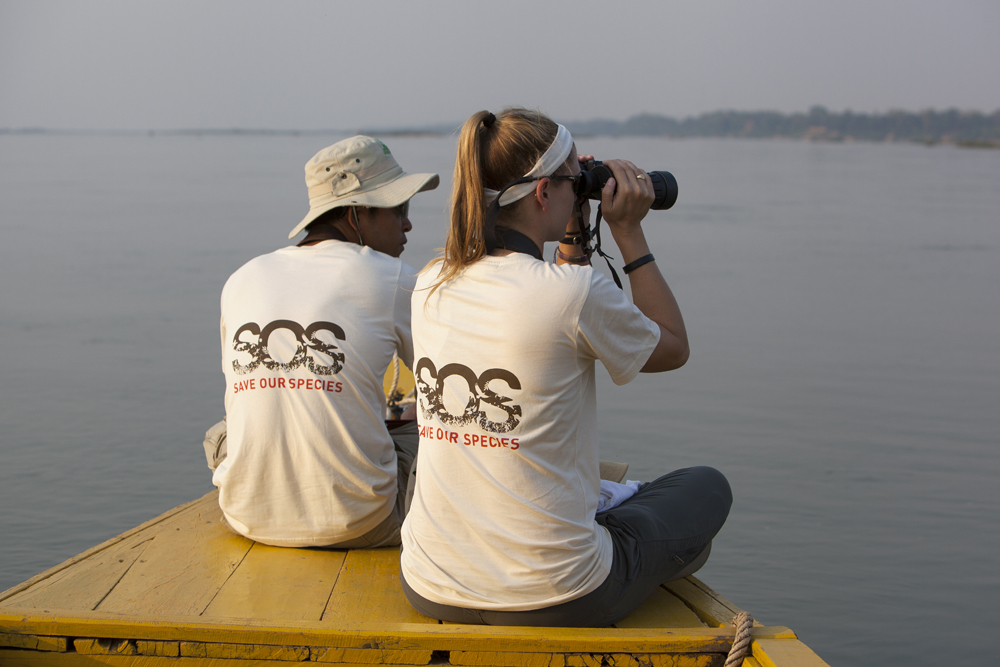About a month ago a photographer with the IUCN, Michel Gunther, came out with the research team to photograph our work. IUCN (International Union for Conservation of Nature) funds a portion of WWF's work in Kratie and thus the photos taken by Michel will be used for promotional material. I really enjoyed having Michel come on the boat with us. He asked lots of questions about the dolphins, the research, and our methods etc. I've been getting a bit discouraged with the research as each day presents new challenges and the general task of following the dolphins is slightly painstaking. However, when I find myself explaining our research to someone with little previous knowledge I'm provided with a renewed sense of purpose and a fresh perspective for why we are doing what we are doing. Michel shared several of the photos he took while we were working and I thought I would share them
Don Sahong Dam
At first I thought I would blog about my experiences on the survey trip this past week, but it happened to be quite similar to the last so I won’t bore anyone with a repeat story. Just as a little aside, the title to that blog definitely would not have been “Rolling on the Mekong Part II”, but rather “Sweating on the Mekong” as that basically sums up my entire week.
Instead I thought I would take a minute to write about the construction of the Don Sahong Dam. The population of Mekong River Irrawaddy dolphins ranges from Kratie, Cambodia north to the Laos/ Cambodian border (190 km). The population at the Laos/Cambodian border is completely isolated from the others and currently numbers just six animals. Despite this small number of dolphins, in 2011 approximately 20,000 tourists visited the transboundary pool to view the animals, thus providing a significant income to the local community. The landscape in this area is also beautiful and contains mountains, waterfalls, and a diverse forest ecosystem.
Khone Falls at Laos/Cambodia border
This section of the Mekong River at the Laos/Cambodian border also happens to be the site where the Laos government is planning to construct the Don Sahong Dam. This hydropower dam will create electricity for the people in the surrounding area of Laos, but it will also likely cause the extirpation of the six remaining dolphins in this transboundary pool. Impacts to the dolphins will be encountered both in the construction and operational phase of the dam. Specifically, the use of explosives, drills, jackhammers, etc. for construction could potentially kill the animals which possess sensitive hearing structures. At the very least, the amplified noise could impair their ability to communicate and forage. Additionally, excessive boat traffic during construction poses the threat of boat strikes or negative long-term effects due to cumulative harassment. During the operation phase the dam will likely change the hydrology of the river because a portion of the sediment will be trapped by the dam and periodically flushed out. By altering the complex hydrology of the Mekong River the dam stands to affect fish behavior and also the habitat of the Irrawaddy dolphins. Finally, the dam will likely block the migrations of more than 100 fish species.
The developers have proposed mitigation measures, but they have not been tested for large-scale projects such as this dam. Given the immediate threats to the dolphins as a result of the dam construction combined with the longer-term consequences including habitat degradation and a decline in fish populations the Don Sahong Dam poses an extremely high risk to the remaining animals in this pool.
There is no denying that Laos deserves the right to develop and provide electricity to its citizens, however, steps should be taken to mitigate the risks to the ecosystem. Thus far the mitigation measures suggested in the EIA (Environmental Impact Assessment) have been inadequate, or in addressing certain risks, completely absent. There is actually an alternative project to Don Sahong, the Thako Project, which proposes to divert water from the river over land to generate power. This option would have a much lower risk to the ecosystem and still produce 75% of the electricity that would be created by the Don Sahong Dam.
At this stage the developers are planning to begin construction in the near future, but WWF is advocating for the termination of the project until further studies taken by a third-party agency can better assess both the social and environmental impacts of the project. Hydropower development is increasing in the region and time will tell if this specific project at the Laos/Cambodian border will further the decline of an ecosystem that not only contains a wealth of biodiversity, but provides vital resources for the people who depend on it.
I have obtained most of the information in this post from articles put out by WWF and have included a link to one here in case anyone wants to learn more.
I thought I would also include just one quote from a science brief written by Gerry Ryan, the WWF Technical Advisor in Kratie:
In the long-term, with many proposed infrastructure developments likely to be constructed on the Mekong River, and with the dolphin population already imperiled it may be difficult to easily attribute cause if the population goes extinct. There is no doubt that conservation of the Mekong’s Last dolphins will be difficult, but the attitude implicit in the environmental impact assessment – –that the dolphin population is already vulnerable and therefore should not stand in the way of development – will achieve nothing but to seal their fate.
- http://wwf.panda.org/?215471/Dam-threatens-survival-of-Mekong-dolphins
Maggie and Julia take on Thailand
I love visiting new places – especially ones I’ve heard so many good things about. I also love hanging out with my sister, Maggie. Needless to say this combination made for an awesome trip to Thailand. We had a great time navigating a new country together and were able to visit three different places during our trip – Chiang Mai, Koh Lanta, and Krabi.
Melissa Brobst, a high school friend of ours, is currently living in Chiang Mai which is where we started our trip. Melissa has been living in the city for over a year and thus was able to recommend a lot for us to do. A couple of the highlights from Chiang Mai include visiting Doi Suthep, the Mae Sa waterfalls, and our elephant trek.
Wat Phra That Doi Suthep is a Theravada Buddhist temple perched high up on Doi Suthep mountain about 10 miles outside of the city. The temple was built in 1383 and draws from both Buddhism and Hinduism. There were multiple pagodas, statues, and shrines with the most holy being the copper plated cheri in the picture to the right.
Wat Phra That Doi Suthep
We also visited the Mae Sa waterfalls which is an 8 tiered waterfall where you can hike to the top. It was pretty hot out by the time we arrived, but the climb was beautiful and there were fewer and fewer tourists as we got to the top. I kept trying to compare the landscape of Chiang Mai to something familiar to me and could only come up with this – it was similar to the hilly, winding landscape of Big Sur minus the ocean, but including beautiful “fall” foliage (technically it’s just the dry season, not fall, but, oh well).
Hiking Mae Sa waterfalls
The next day we went on an elephant trek with the Ran-Tong Elephant Centre. I was apprehensive about attending one of these tours as I know many companies treat the animals poorly and are only in business to make money rather than provide a sanctuary for the animals. Also, after experience working in a captive marine mammal facility I have mixed feelings about keeping large mammals in captivity. However, with all that being said, after some research we decided to go on the tour and were really happy with our decision. Seeing these animals up close was an experience I will never forget – even by the end of the day I could not get over the combination of their size and power mixed with their gentle nature.
After we arrived we were allowed to feed the elephants an assortment of fruits and sugarcane – watching their probing trunks seeking out tourists with the food was hysterical. We then took a 30-minute ride on the back of the elephant around the countryside. The guide assured us no one has fallen off so we wouldn’t either. I highly doubt they will be able to claim this forever. The person who sits in front has to tuck their legs behind the elephant's ear and then hang on to a very thin rope all the while moving side to side underneath the elephant’s undulating spine. Maggie promptly decided she was sitting in back so I braved the front which turned out fine minus a precarious moment when I thought I could use my GoPro and hold on at the same time. In the afternoon we rode the elephants down to a lake. Our elephant marched right into the water and sat down, prompting Maggie and me to jump off and watch the elephant roll around in the water cooling itself off. At one point a guide came up to Maggie and handed her something before she could object – it was a massive piece of elephant poop. I was laughing so hard and eventually Maggie was, too.
The mahouts and the guides on the trip were excellent. Each elephant has a mahout or “trainer” who helps take care of it and teach it the commands of “go” “stop” and “lay down” etc. Many of these camps use hooks to make the animals behave, but true to the advertisements, I didn’t see any sign they were used here. Also, during lunch I had stepped away from the group for some reason and witnessed one of the mahouts playing with a 2 year old elephant. He was sort of tickling it with his foot over and over and not to anthropomorphize, but the elephant looked to be enjoying it. While I’m sure there’s plenty of moments like this, it was neat to witness this interaction. Finally, our guide, Adam (definitely not his Thai name) was a good spokesperson for the center and elephant conservation. He used to work as a translator for the U.N. and thus his English was near perfect. He explained that all the elephants in the camp either had been used to assist with logging or were used as taxis for tourists, often shuttling people around for 12 hours each day. I had been informed about questions to ask to ensure the animals were treated properly and was pleased Adam addressed each of them to the group. The center employs a veterinarian who visits once a month to check on each of the animals. The animals are fed a balanced diet of fruit and grasses. The elephants are only ridden for an hour maximum and the animals did not have any noticeable wounds, supporting their no hook use policy. While I realize I was trying to justify my enjoyment of seeing these amazing creatures up close by trying to ascertain whether they’re treated well, I believe overall our money did go to a worthy organization – even if all animals aren’t always meant to be interacted with in such an up-close manner.
Paddle boarding
After seeing the nightlife of Chiang Mai with Melissa and her friends (which I quite enjoyed after the sleepy nights in Kratie), we headed to Koh Lanta – the largest of the three major islands comprising Koh Lanta district. Koh Lanta is known for its beautiful beaches and it did not disappoint. The water was the perfect temperature and crystal clear at the shore fading into a cerulean blue. The first day Maggie and I soaked up the sun and went for a short paddle board ride. The next day we went diving/snorkeling at Ko Haa – a dive site about an hour away from Koh Lanta. Although we didn’t see any whale sharks, the dives were still fun. I saw several moray eels, a sea snake, and soft coral species I had never seen. When I asked the dive guide what kind of coral it was he told me it was purple soft coral. I suppose I’ll have to do some extra work if I want to actually I.D. the species!
While basically everything was enjoyable in Koh Lanta – the food, the beach, relaxed atmosphere etc., the mosquitoes had other plans. Maggie and I stayed in a hotel comprised of these modern concrete bungalows nestled along the beach. Although they looked to be airtight, each morning Maggie and I were bombarded by clouds of mosquitoes. I made some offhanded remark about malaria and dengue which did not sit well with Maggie, but we both seem fine for now and all in all thoroughly enjoyed this part of our trip.
We then made our way to Krabi which is located on the mainland about a two hour ferry ride north of Koh Lanta. We only had one full day in Krabi which we spent on Railay Beach – a 15 minute boat ride from Krabi. The island is known for its limestone cliffs which attract lots of rock climbers and also beach-goers like us. There is one section of the island where you can climb one of the cliffs to a lookout spot. The climb consisted of clambering over rocks and using a thick rope to hoist yourself up most of the way. The effort was definitely worth it, though, as the view from the top was stunning.
View from lookout point
We spent the rest of the day relaxing on the beach and after a little too much sun decided to try to catch a boat back to Krabi. We had bought a roundtrip ticket and assumed any one of the boats on the beach would take us back. They were all anchored a bit far out so we waded out to one and got on. The driver said something to us in Thai and then left – we sat there for 30 minutes when he came back and told us to get on another boat because it matched the number on our ticket. We struggled to not get completely soaked or trip on one of the many anchor lines while switching boats. After about an hour we made it back to Krabi. All in all we made it back without too much delay, but I had to laugh at the situation. The system to catch a boat back was simple; Maggie and I just didn’t understand it. I’ve found this is the case with most of the traveling I’ve done – you are assured to make mistakes no mater how simple the task and learn as you go.
Overall, though, the trip was a wonderful getaway for me and I hope an enjoyable graduation gift for Maggie who truly deserved it after all her hard work.
Surprise!
So Monday happened to be my birthday and I assumed it would be like any other day (which would have been fine with me!) as I know birthdays are not typically celebrated in Cambodia – but the staff at my office thought otherwise and threw me a little surprise party. I wanted to be sure to write about this before I headed off to Thailand as I was extremely touched.
On the way to the field site in the morning San informed me we would have to go back to the office early, around 3:30, to attend the blessing ceremony for the new office (I’ll save the explanation of this ceremony for another entry!). Needless to say I was annoyed – why had no one informed me of this before? After the ceremony I was entering data when my co-worker, Meta, told me to come outside. I was confused, but did as I was told and found the entire office staff and my group of expat friends all gathered in the front yard singing happy birthday. They had bought a cake for me which actually tasted quite a bit better than the last Cambodian cake I tried! Also, two of the French expats, Julie and Marion, made a wonderful REAL chocolate cake (chocolate is hard to come by in Kratie) and yummy crepes. The staff also bought me gifts – a beautiful silk scarf and a necklace which I’m sporting in the pictures (excuse the nasty field work clothes – evidence this was truly a surprise party!).
Over the last three months adjusting to the lifestyle in Cambodia and attempting to get the research project off the ground has been challenging. This party helped me understand, however, that I have made friends who care about me. Each day I’m trying my best to fit in and be a member of this WWF organization and the community in Kratie and felt this party was a small indication I’m on the right track.
I’m waiting on some more pictures, but will post the few that I took (many of me with expats and staff!)
Infanticide?
The last couple weeks have been fairly ordinary. We’ve been going out in the field as much as possible and trying to work around people’s schedules, holidays (Chinese New Year), and transitioning to a new office. Originally, our new office was supposed to be this beautiful new building with air conditioning just around the corner from the current office. I was thrilled seeing as how I live legitimately three minutes from the current office. However, the landlord sold it out from under us and now our new location is about a 15-minute bike ride away from my apartment. At first I considered riding my bike, but some of the roads are unpaved and at night the dogs are really dangerous. I’m in the process of deciding whether to buy a moto or hire a “motodop” (a hired driver) to take me to and from work. If I bought a moto I’d have the freedom to come and go as I please, however, for the short time I’m here it’s not really cost effective. Also, there are no traffic rules at all here so I’m sure I’d get myself in some sort of wreck. We’ll see how the motodop goes, but I may end up giving in and buy a moto.
The field days on the river have been challenging as this species of dolphins is incredibly shy and evasive. Oftentimes we will identify an animal we want to observe and then it seems to just magically disappear. Essentially it’s a bad game of cat and mouse, but I’m crossing my fingers at the end we can still collect some valuable information.
I’m hoping the events we witnessed just the other day will be valuable! I’m 99% certain we witnessed an attempted attack on a newborn calf (see photos below). The calf had been born approximately 4-5 days before (the benefit of these animals inhabiting a really small area is the tour boat drivers can keep tabs on the number of calves and when they’re born). San, one of the research team members, has instructed the tour boat drivers to call him if they see a newborn calf. The event with this newborn calf went something like this – we had just finished lunch and pulled up to a group of 8-10 animals (which included the calf). Before we had even started collecting data the group became increasingly active and several animals started leaping out of the water and then one specific adult lunged on top of where the calf was located. After this the group took off and began traveling so fast the boat could hardly keep up. The animals continued to travel in a sort of “herd” formation, all lined up together, and continued leaping out of the water. The event lasted for about 40 minutes and consisted of me frantically telling San to take photos while I desperately tried to fix my GoPro which has taken to overheating whenever we go outside. The photos we obtained from the event weren’t great, but I do know we witnessed was out of the ordinary behavior. We’ll keep looking out for events such as this one, but I think what we observed lends credibility to the hypothesis of infanticide as the cause of the high calf mortality. Or, on the other hand the animals were merely being highly social. Hopefully time will tell!
This week I’m off to Thailand to visit Maggie and am dying of anticipation – I cannot wait to tromp around Chiang Mai and the beautiful beaches with my favorite sister :)
Photo of the calf during the potential attack - it's a bit hard to tell, but I believe it's the calf after it's been flipped on its back
Photo of the calf the next day - you can see some tooth rake marks near its eye
Research update
Now that I’m back and settled in Kratie I thought I would give a quick update on how the actual work is going! While we have a couple other projects we’re hoping to accomplish, the main one we are working on now is the one described on my blog about the infanticide behavior. Theoretically, it sounds easy enough to go out on the water, observe the animals, record some data, and analyze it. However, what I’m learning from this experience is how a clear-cut protocol on paper can become increasingly complicated in practice.
The first task we had was to organize a research team and train everyone on the methods and how to fill out the data sheets etc. etc. Ideally we need a team with one photographer (we use photos of the dolphins’ fins to identify them), two data recorders, and a boat driver. One of the data recorders, SeangAun, is actually a masters student at the Royal University of Phnom Penh and he will be living in Kratie while he collects data for his thesis. Even though I just finished my masters I was actually asked to be one of his supervisors – I find this rather hysterical, but hopefully I’ll do an OK job. The rest of the team will be WWF staff and include: Lor Kimsan, Hang Sereyvuth, and Tan Someth Bunwath.
I was nervous the team wouldn’t understand my explanations and we would struggle with the language barrier, but they asked excellent questions throughout the presentation and boosted my confidence that we could pull off the project. Over the last week though we’ve hit some roadblocks….for instance, we’ve discovered the tour boats are too slow to keep up with the animals making data collection really difficult. We are in the process of trying to repair WWF’s boats and determining if using a jet engine boat will or will not harass the dolphins/get stuck on the river bottom. Additionally, we definitely have the manpower to conduct the study, but the WWF staff is involved in many other projects and planning in advance is something I realize I need to be much more organized about. I also didn’t quite realize I would be in charge of the budget for the project, so that’s been a new challenge to figure out, but probably a useful skill for down the road. I’m thinking the next several weeks will continue to be challenging as we figure out the logistics and iron out the methods for the protocols, but I’m crossing my fingers things will get a bit easier.
On an unrelated note we had another dolphin die :( The dolphin was found about 100km north of Kratie in Stung Treng Province. I was annoyed the WWF truck was late picking us up that day, but when I saw the dead dolphin in the back of the truck I got over that pretty quickly. At the WWF office we unloaded the carcass and began taking various measurements of the animal according to the necropsy protocol.
Then came the real problem….fitting the animal into the freezer. As it turns out this animal was too large to fit and we cut its tail off in hopes that would help. It didn’t. The final solution was to wrap plastic around the opening to the freezer and tape it shut. The smell from the room with the freezer isn’t horrible yet, but I’m slightly dreading when we finally do the necropsy.
On an even more unrelated note, I was able to celebrate my co-worker, Makara’s birthday last week. She invited me and one other expat, Coline, to go out to dinner. A friend of hers dropped off a birthday cake for all of us to share. It was elaborately decorated and seeing as I hadn’t had cake in several months I was excited to try it. However, Coline informed me the cake may look like ones from home, but doesn’t taste like them at all. Because most people don’t have refrigerators these cakes are made with a type of resin that gives it a slightly strange taste. I’m slowly learning that many of the foods here including desserts, may look like one thing and taste like another. Makara was surprised that we paid for her dinner and explained birthdays aren’t really celebrated in Cambodia. This was confirmed for me when the next day, SeangAun (the masters student I’m working with) wrote the date on a data sheet and remembered it was his birthday. He then had to do the math to figure out how old he was. I was slightly shocked by this cultural difference because birthdays are obviously widely celebrated in the U.S. SeangAun explained to me if you’re a “normal” person in Cambodia you don’t celebrate birthdays, but if you are rich then your parents might get you some gifts.
I’ll try to make the next post slightly more coherent, but wanted to share thoughts about each of these experiences!
I'm trying to learn how to use my new camera and thought I'd share this quick clip of a sunset! Not incredibly riveting, but still pretty.
Loving the sunsets....
Megan visits Cambodia
Apologies for the long delay in posting! My friend, Megan Hanel, graciously decided to come visit me for Christmas and we spent the last 10 days traveling around Cambodia. She arrived on December 20th and immediately after her 25+ hours of traveling hopped on a minivan with me to make the 5-hour trip to Kratie. We stayed in Kratie for four nights, traveled to Phnom Penh for Christmas Eve and Christmas Day, went to Siem Reap to see the Ankgor Temples, and finally back to Phnom Penh where Megan left from on the 31st. I feel incredibly lucky to have a friend who decided to forgo spending time with her family on Christmas in order to come visit me. I was not relishing the idea of spending my first Christmas without my family and instead was able to have a whirlwind trip with one of my closest friends.
I enjoyed sharing with Megan what I’ve learned from living here so far, but the country/language/culture etc. are still so new to me so it was a bit of a case of the blind leading the blind, but we managed. Some of the highlights include……..
· Kayaking the Mekong – When arriving in Kratie I heard there was one other American, a girl named Suzanne, who ran a kayaking business. Suzanne also runs a café which happens to be located a block from my house and I’ve taken to eating at least 3-4 dinners per week at her place. Procuring “groceries” to make dinner I’ve found is incredibly challenging. Long story short I’m lucky to have made friends with Suzanne and was excited about going kayaking with her and Megan. The trip was so much fun and I enjoyed seeing the river from a different perspective. I thought it would be a lazy paddle down the river, but was startled to find the current and eddies were actually quite difficult to navigate. While I ran us into a couple of bushes and we ended up spending 20 minutes trying to paddle against the current only to realize we actually hadn’t moved, we did spot some dolphins and overall really enjoyed the trip.
· Our stay at the Sofitel Phokeethra Hotel – We decided to splurge on the 24th and 25th and stayed in an incredibly fancy hotel in Phnom Penh. While I enjoyed the great service, comfy beds, and yummy chocolates in our rooms, I think I was most excited to have hot water for the first time in 2 months! We also went to a nice dinner on Christmas Eve at one of the hotel’s restaurants and I ordered lasagna. The dish actually had no noodles and was made with potatoes, but…it was still very tasty and I was quite happy to not be eating rice.
· Church service on the 25th – Megan and I found a church for expats (aka the service was in English) and we were pleasantly surprised to show up to a church packed with people of multiple nationalities all coming together to celebrate Christmas. We sang some familiar carols and some I had never heard of, but overall it help make the day feel more like Christmas and remind me why we celebrate the holiday.
· Temples of Angkor – I knew I would travel to Siem Reap while I was in Cambodia to see the temples and am so happy I was able to go so early on in my stay. The temples are stunning displays of the art and architecture of the Angkorian period (AD 802-1432) and helped illuminate the country’s religious past to me – originally Hindu, eventually transitioning to Buddhism. Each of the Cambodian kings was expected to dedicate temples to his patron god, typically Shiva or Vishnu (Hindu gods), his individual family members, and also one to demonstrate his power as a ruler. With each successor the temples grew more extravagant and the city of Ankgor eventually spanned 150 mi2 with a population of 1 million people.
The first day in Siem Reap we booked a bike tour with Grasshopper Tours and had a wonderful day being shepherded around by our guide, Mr. Sambo. We visited Angkor Wat, Angkor Thom, Bayon, and Ta Prohm temples. Ta Prohm was my favorite because the trees have started to reclaim the temple and weave their roots intricately throughout the stones. At one point we went off the road and biked around the corners of the fortified city, Ankgor Thom. The scenery was gorgeous and I felt we were experiencing the temples in a way most tourists do not. The next day we navigated the temples ourselves, hiring an adorable tuk-tuk driver who stayed with us all day. We decided to take the risk of traveling 45-minutes north to see the temple of Banteay Srei and were rewarded with a temple containing amazingly detailed stone carvings. Banteay Srei means “Citadel of the Women” and it is said the temple must have been created by a woman because the carvings are so fine and detailed.
· Having company – this is incredibly vague, but I was so happy to have Megan’s company on the trip. Any of the silly challenges I’ve experienced the last 2 months – where to buy food, how to navigate the city, trying to speak in Khmer, have all been on my own. Megan and I had our fair share of travel hassles, but we handled them together and I was so thankful to have someone to laugh about them with after they had been resolved.
As for now, I need to get back into gear on the research, but I’m really happy with how our trip turned out.
So what do you think of Kratie?
I’ve been asked what I think of Kratie or whether I like the town several times since moving here. I’m still not quite sure what to say when asked. I think this has to do with the fact everything here is new and different from what I’m accustomed to. For instance, the first day when I arrived I walked around trying to find a store to buy some food and a place that sold electronic equipment in hopes of navigating where to buy a modem for internet. I quickly realized most everyone buys their food at the market or in these little storefronts that double as peoples’ homes. There weren’t any traditional “grocery stores” like I was used to. I’m slowly navigating where I can buy what and do things like laundry, buy a decent meal, or get a bike tire fixed. I actually stumbled across one store that sells western food items like pasta noodles, yogurt, nutella, and even a box of corn flakes. After eating mostly knock-off brand pringles and random crackers for snacks, I was ecstatic.
The language barrier also threw me for a loop at first. During my first week everyone at work went out to dinner, which was lovely, but most of the conversation was in Khmer. I already felt a bit awkward trying to navigate the new foods I was trying with the chopsticks I’m not particularly adept at using, and felt silly sitting there not joining in the conversation. However, the staff at WWF speak English well, so I haven’t had trouble at work yet. I realize I’m now thankful they often speak Khmer as it gives me many more opportunities to learn. If I’m out in the market though, that’s a different story. I didn’t understand the smallest amount of fruit they will give you is 1 kilo so that resulted in me buying literally 20 bananas one day. I’m also trying to learn the numbers in Khmer so that I can understand how much everything costs. However, often the storeowners tell me the price so quickly that I inevitably just stare back at them with a slightly dumbfounded look on my face. I’m getting better at making them repeat it until I truly understand what they are saying. Just to let you know the Cambodian language is called Khmer (I was pronouncing it wrong until the week before I left for Cambodia!) which has its own unique script derived from Sanskrit. The alphabet has roughly 33 consonants and 24 vowel combinations. I’ve actually hired a tutor so we’ll see how much I improve in the upcoming months.
The last thing that you can’t help but notice walking around Kratie is how differently people live here. While some people are well off and have nice homes, many do not. This isn’t to say that their lives are any less enriched, but I have found myself inevitably being grateful for the luxuries we are accustomed to in the U.S. Because I stick out very much in town I feel odd snapping photos with my big DSLR camera, but have tried to capture some to give you a quick glimpse of what the town is like.
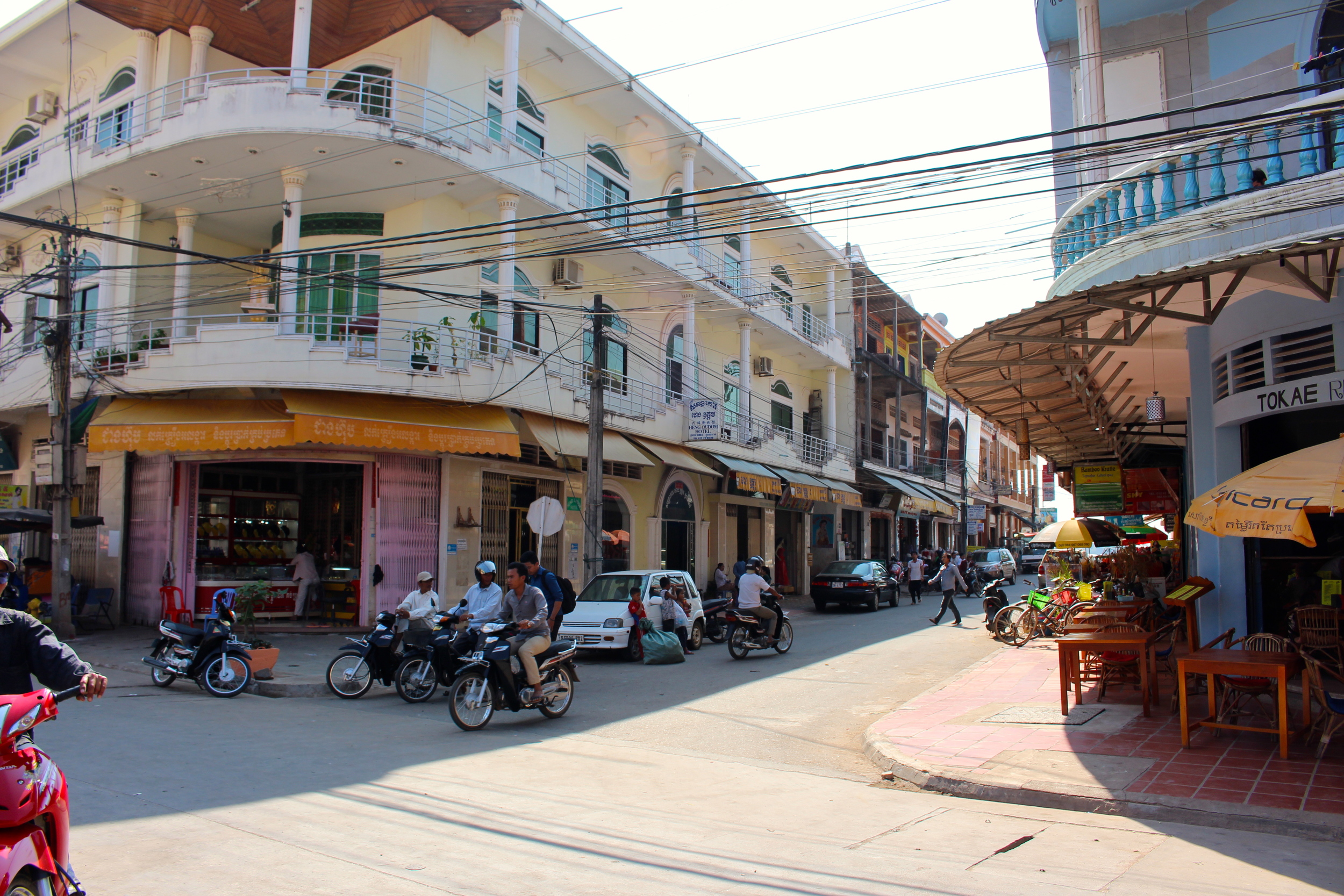
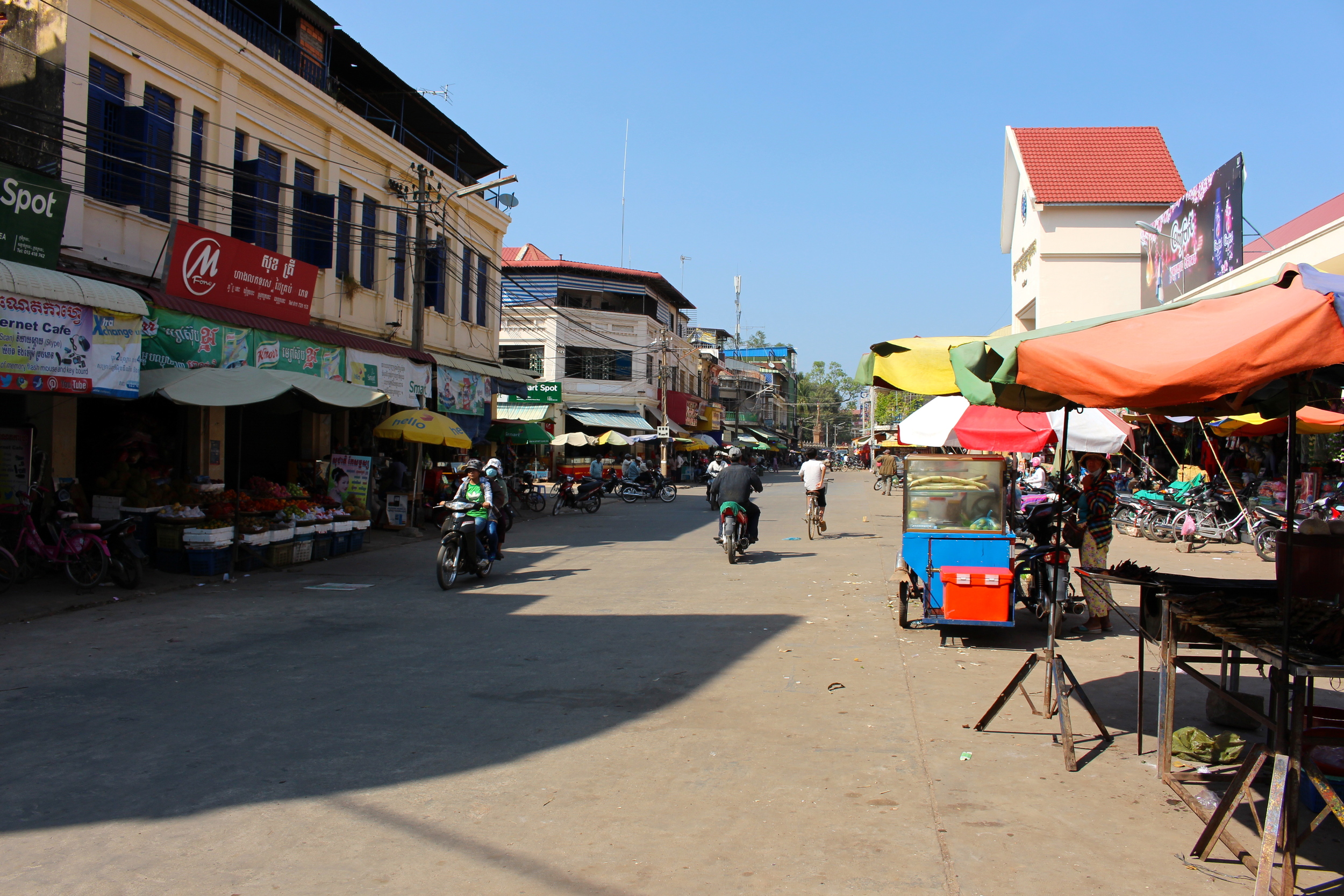
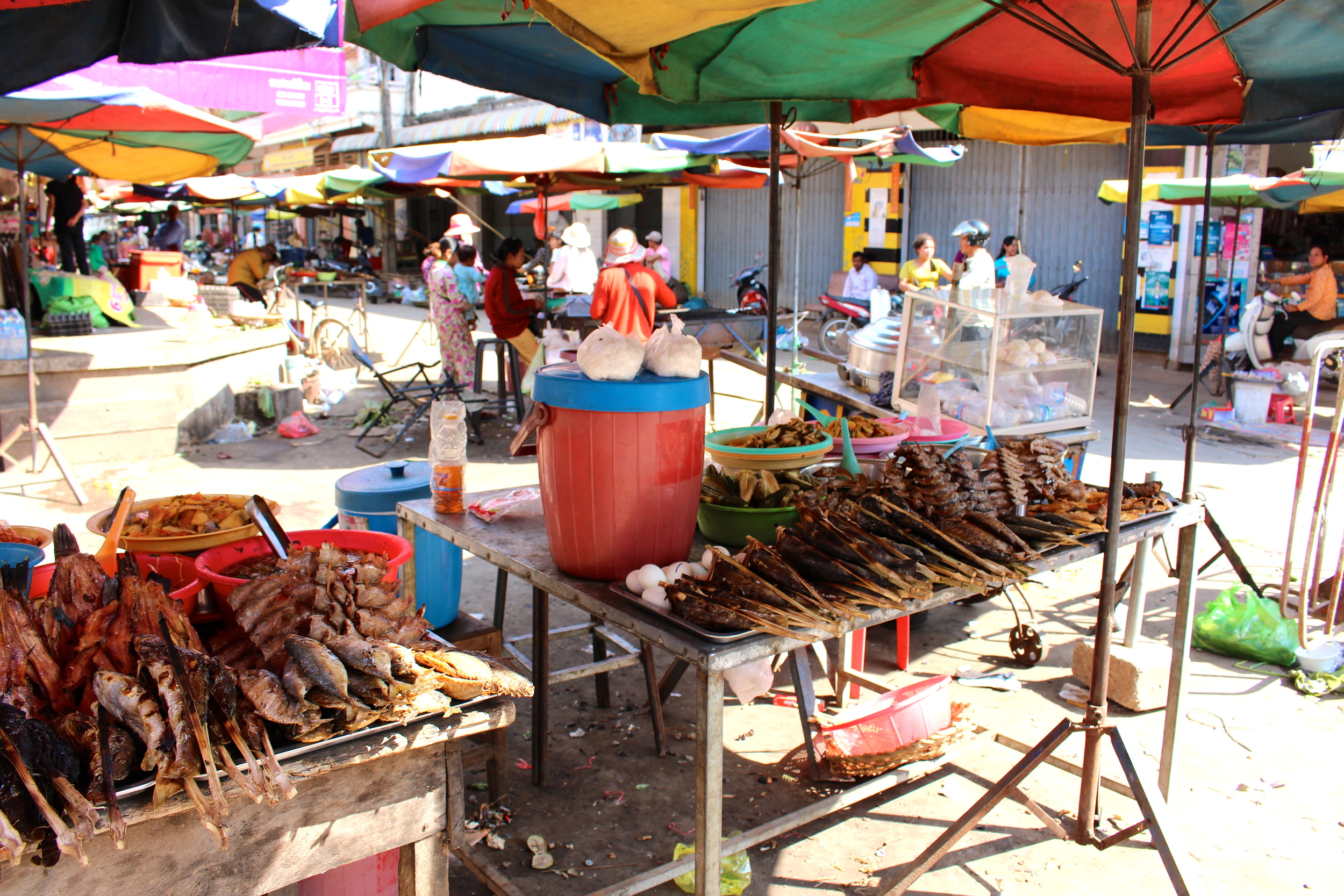
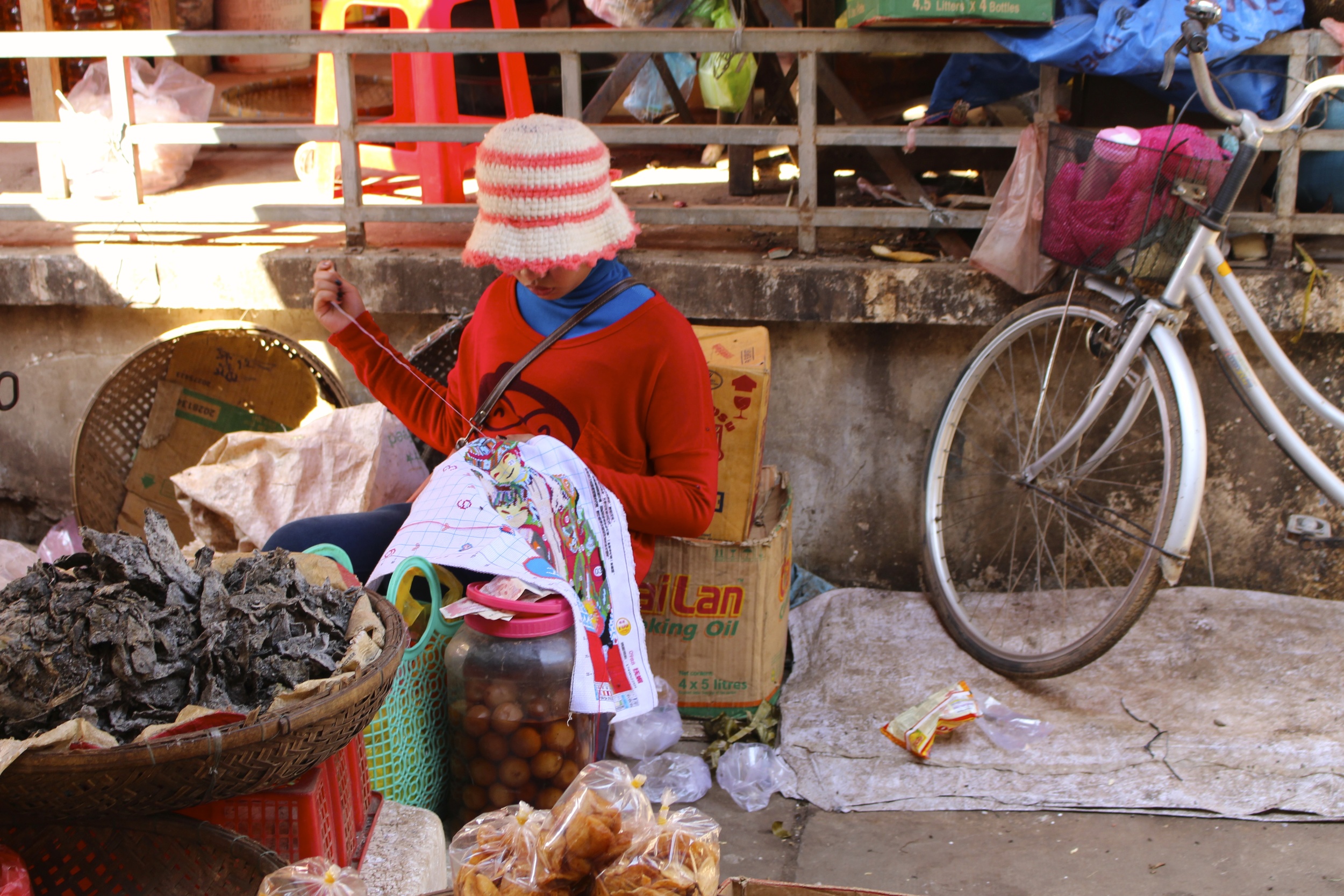

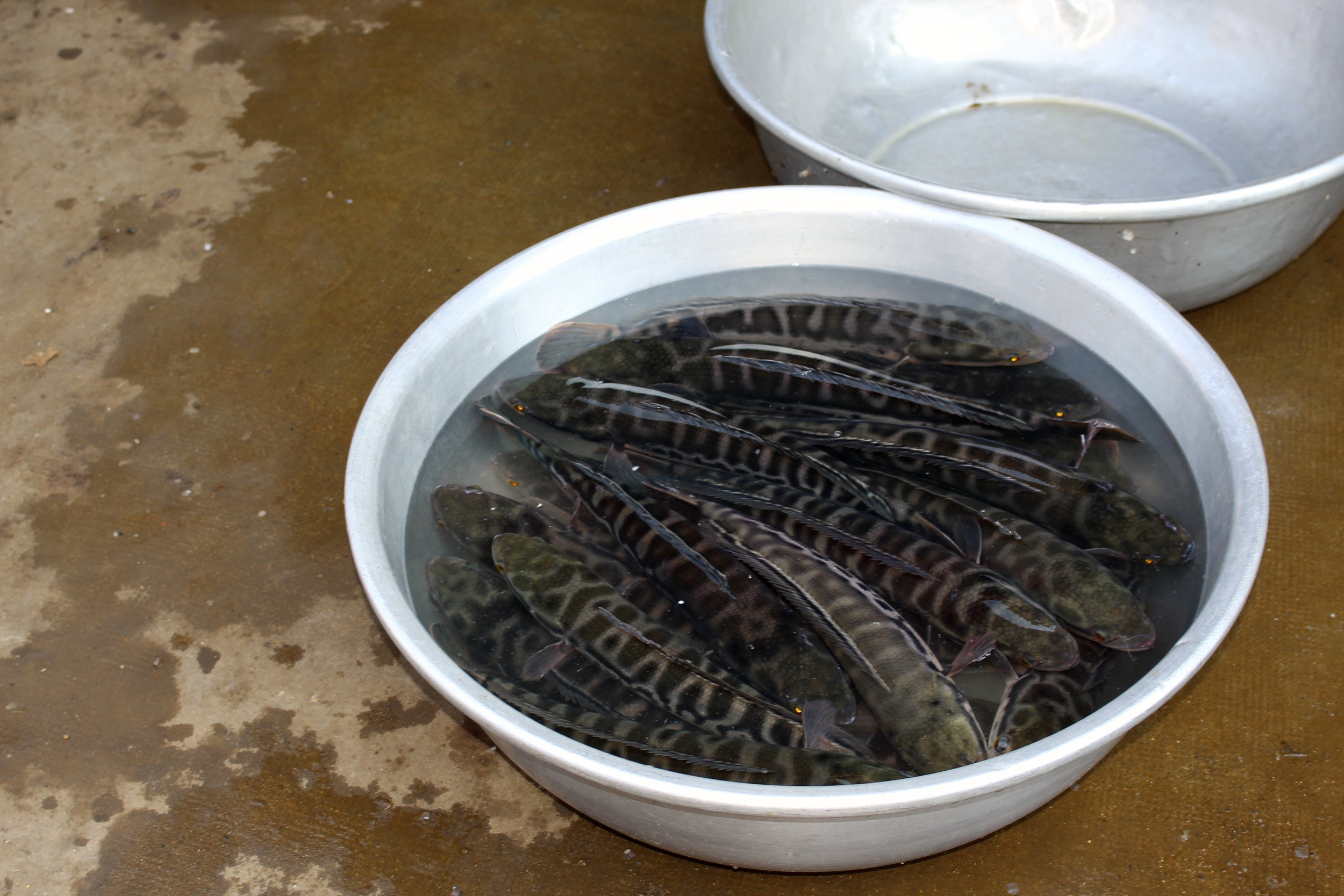
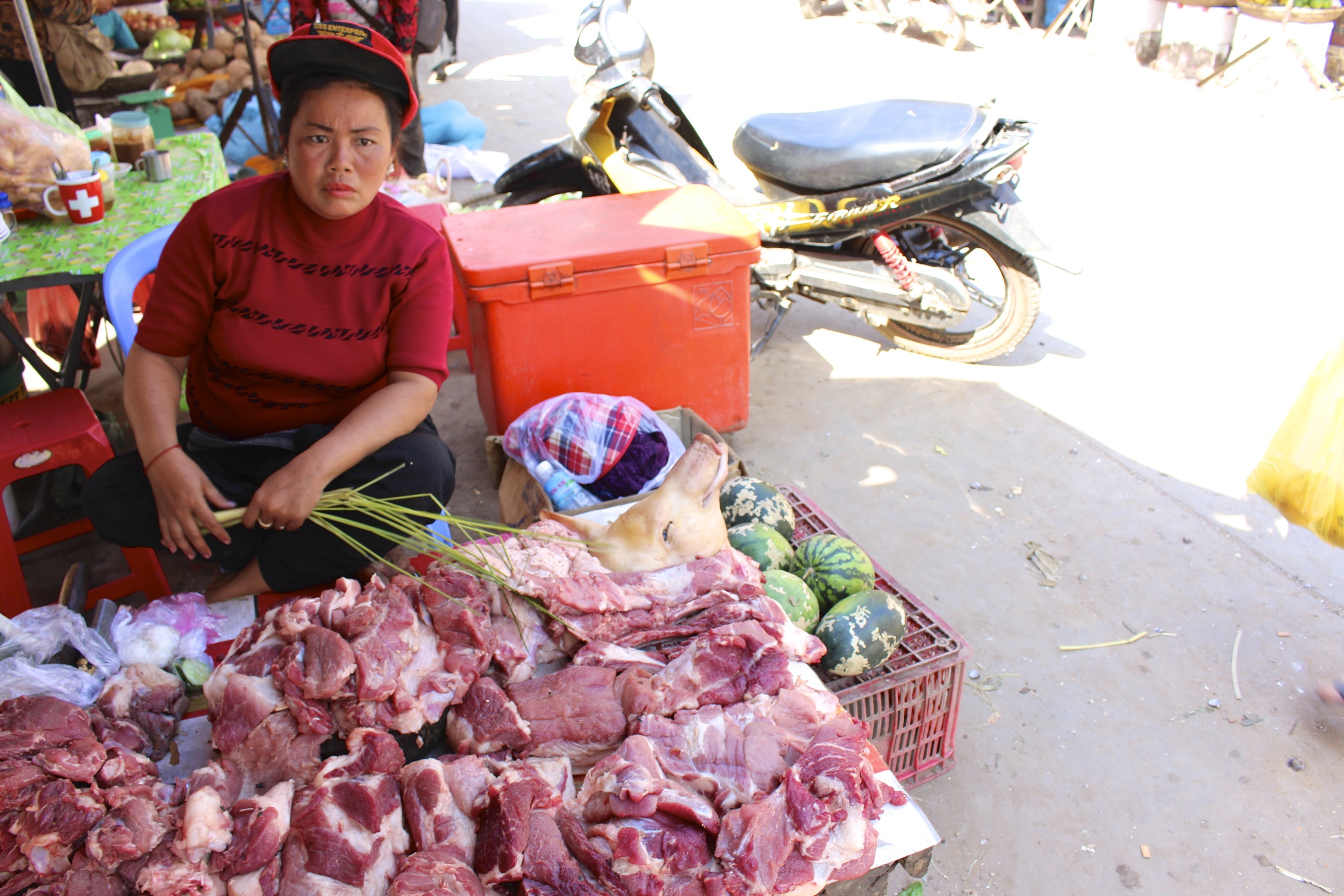

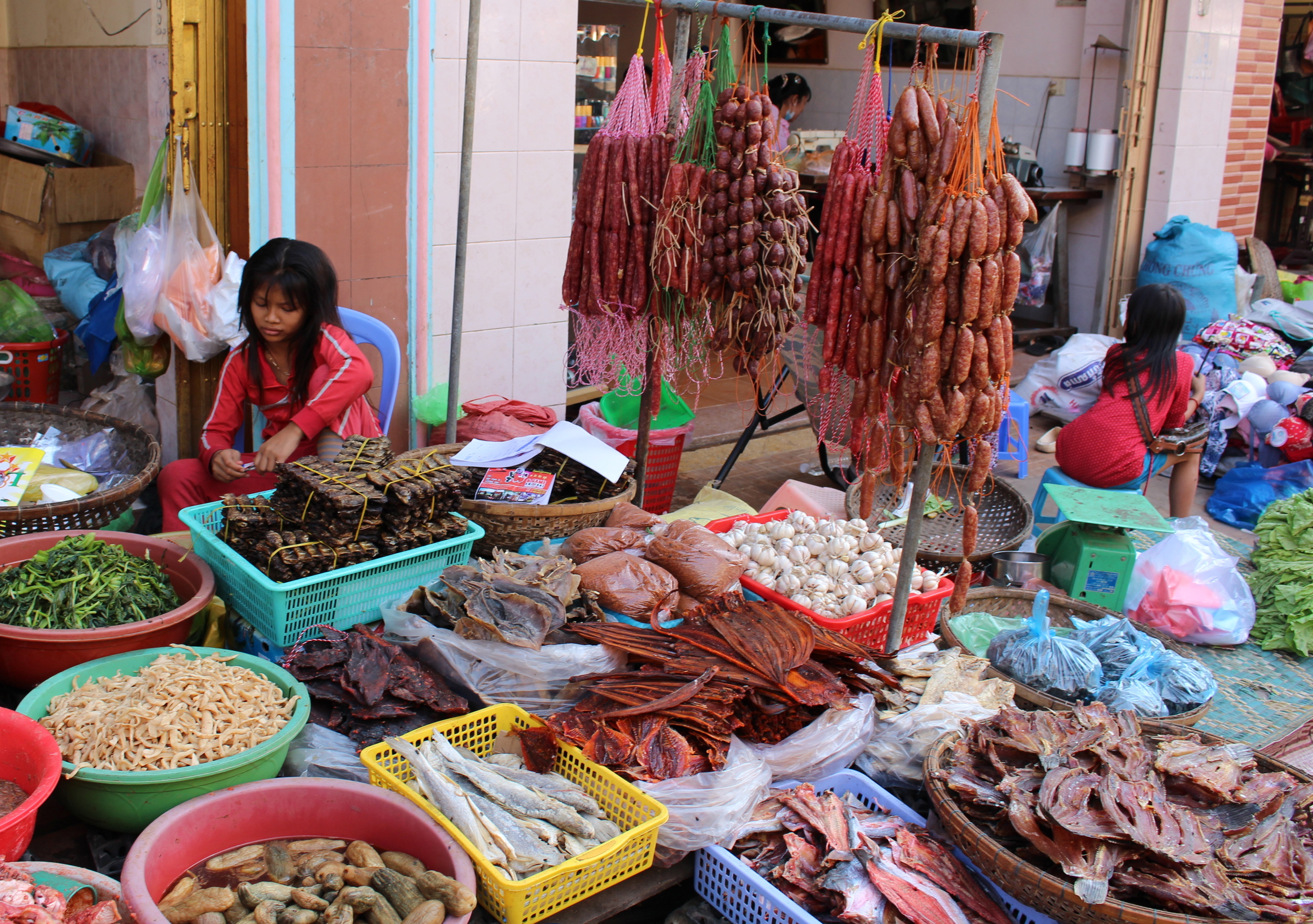
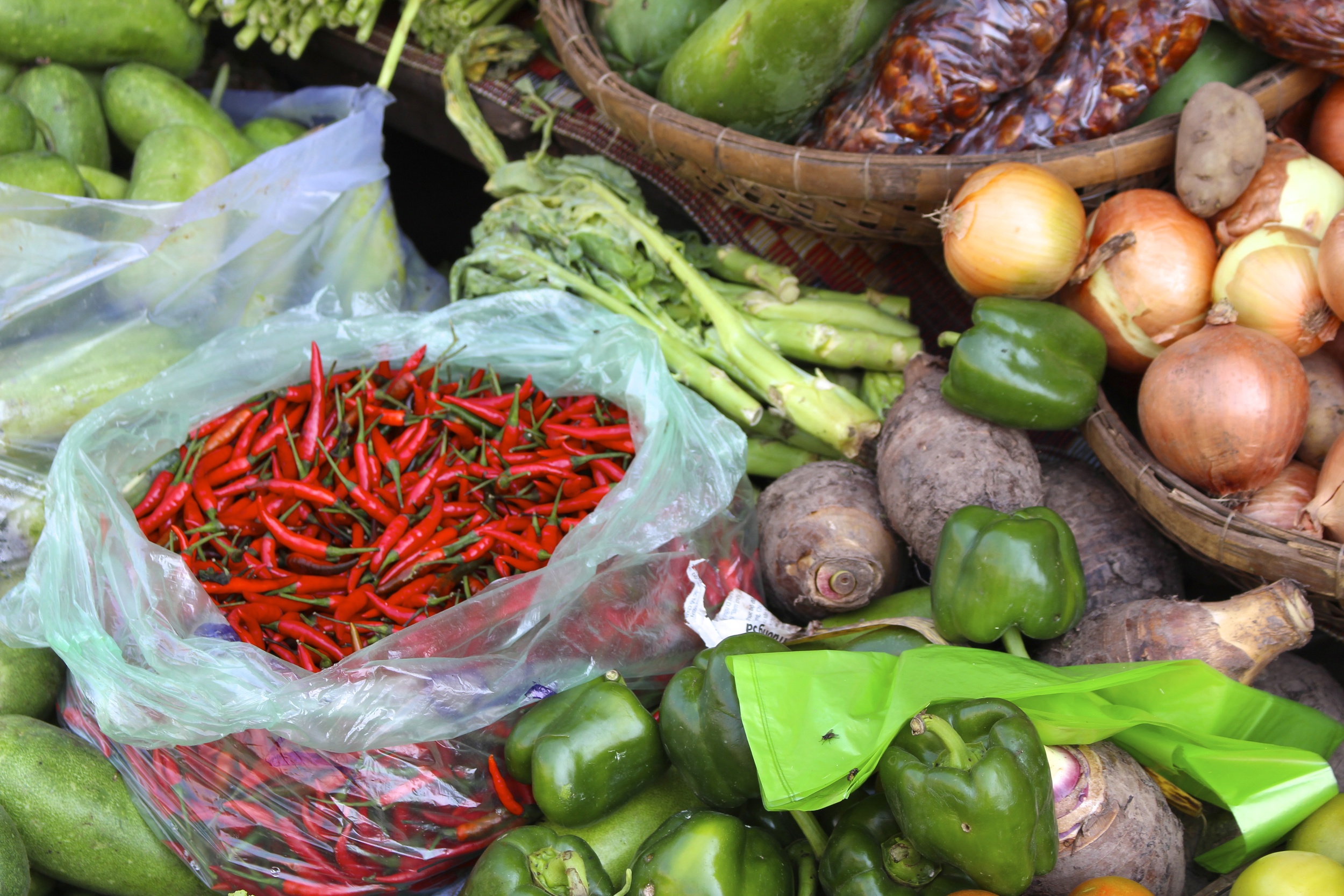
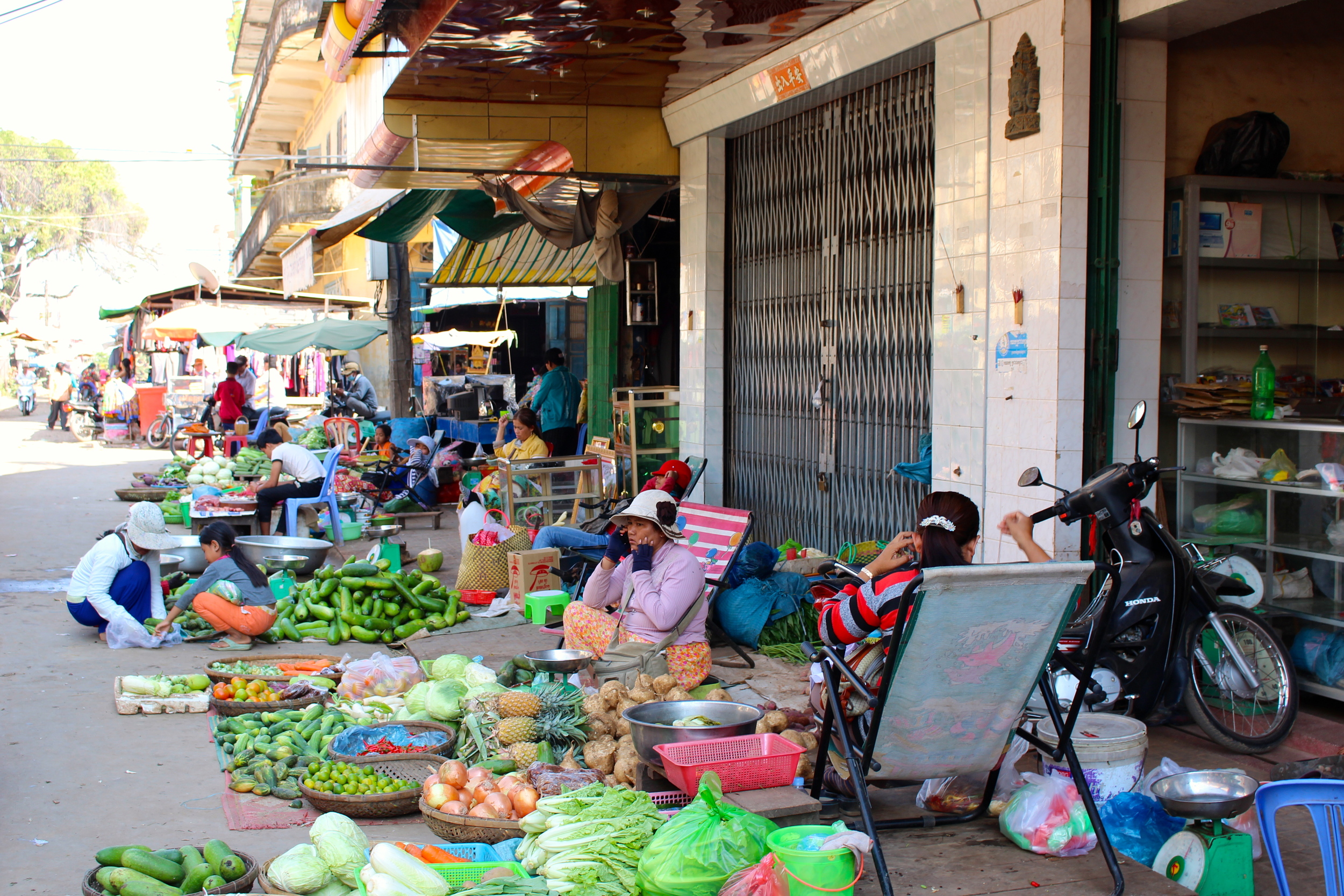
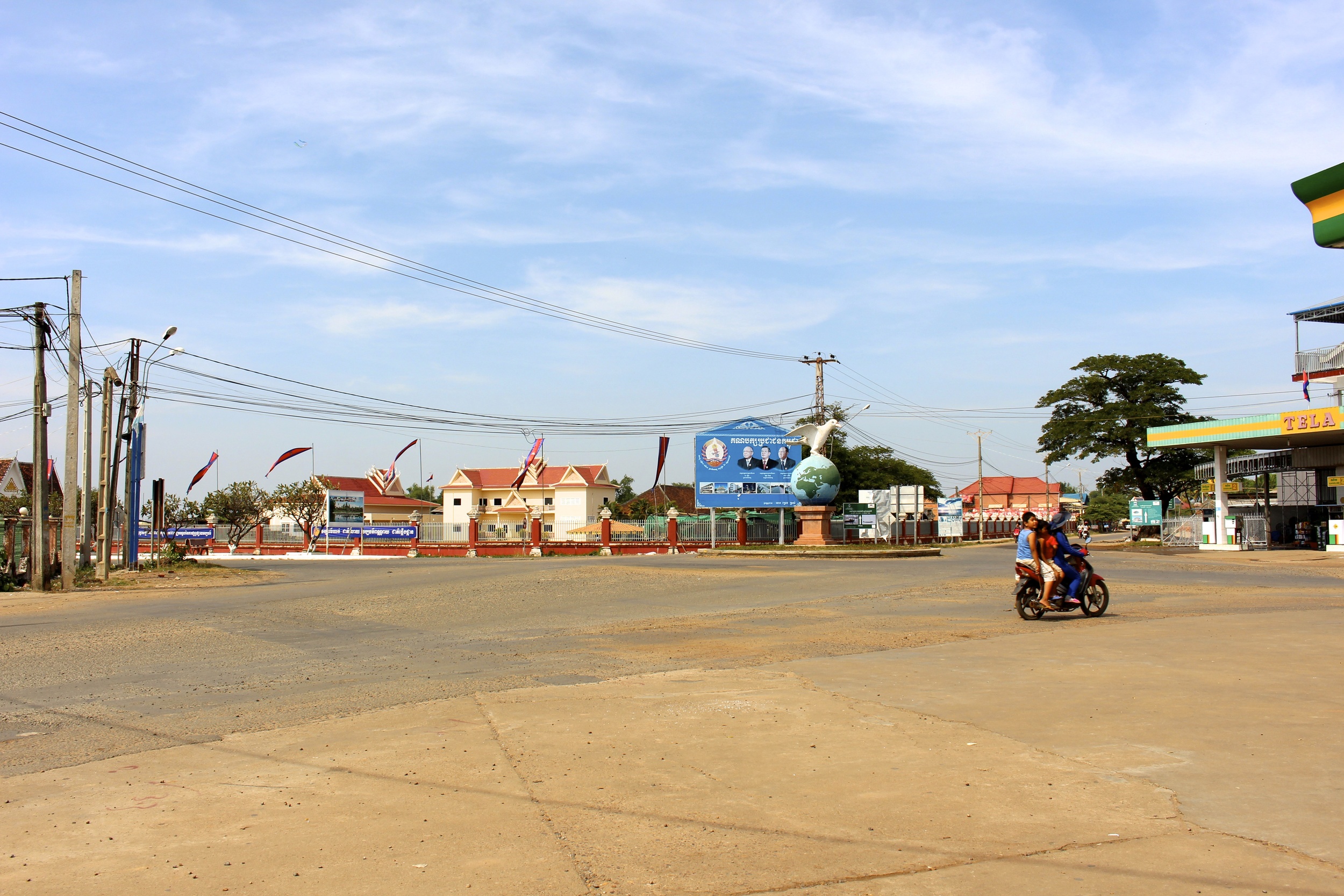
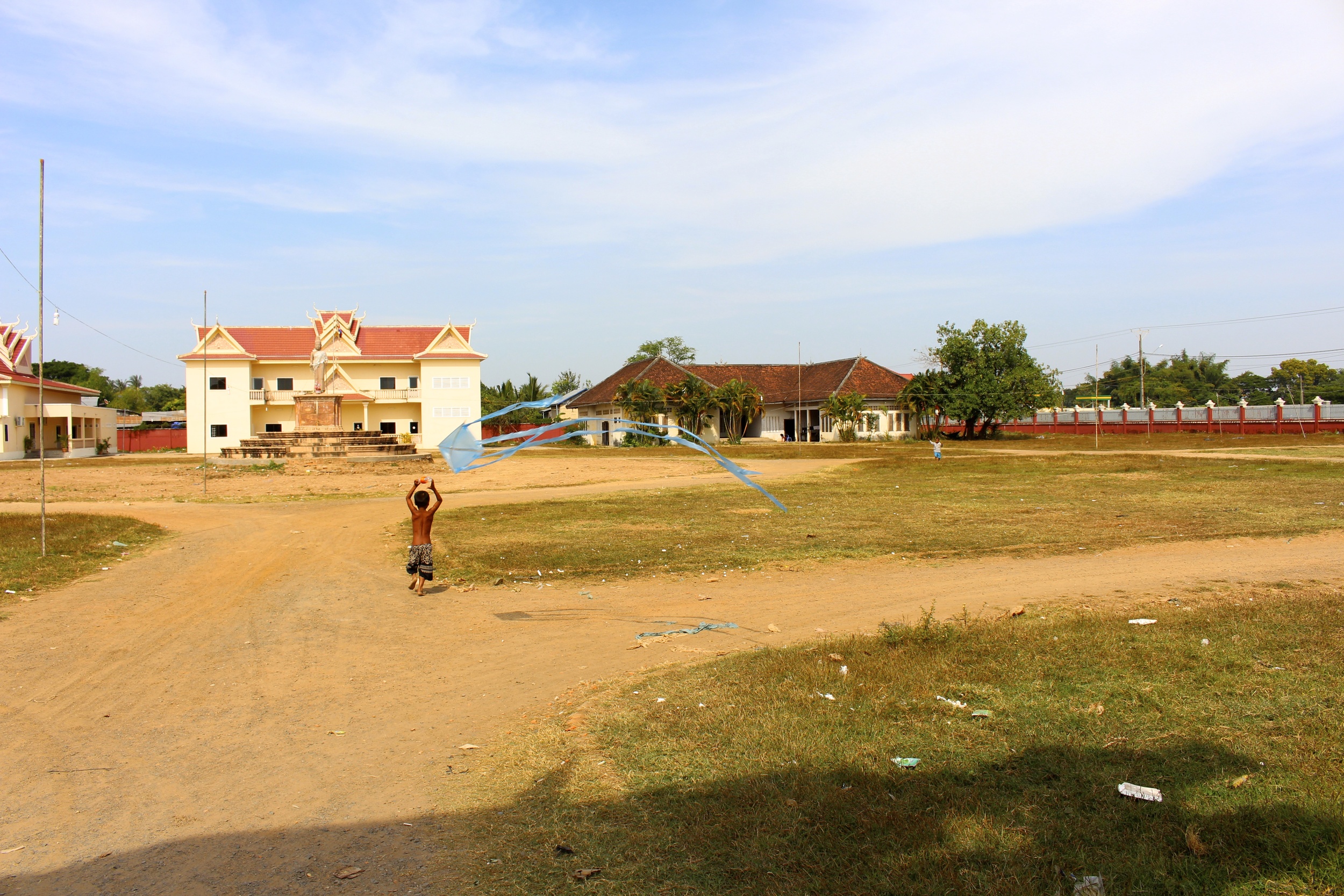
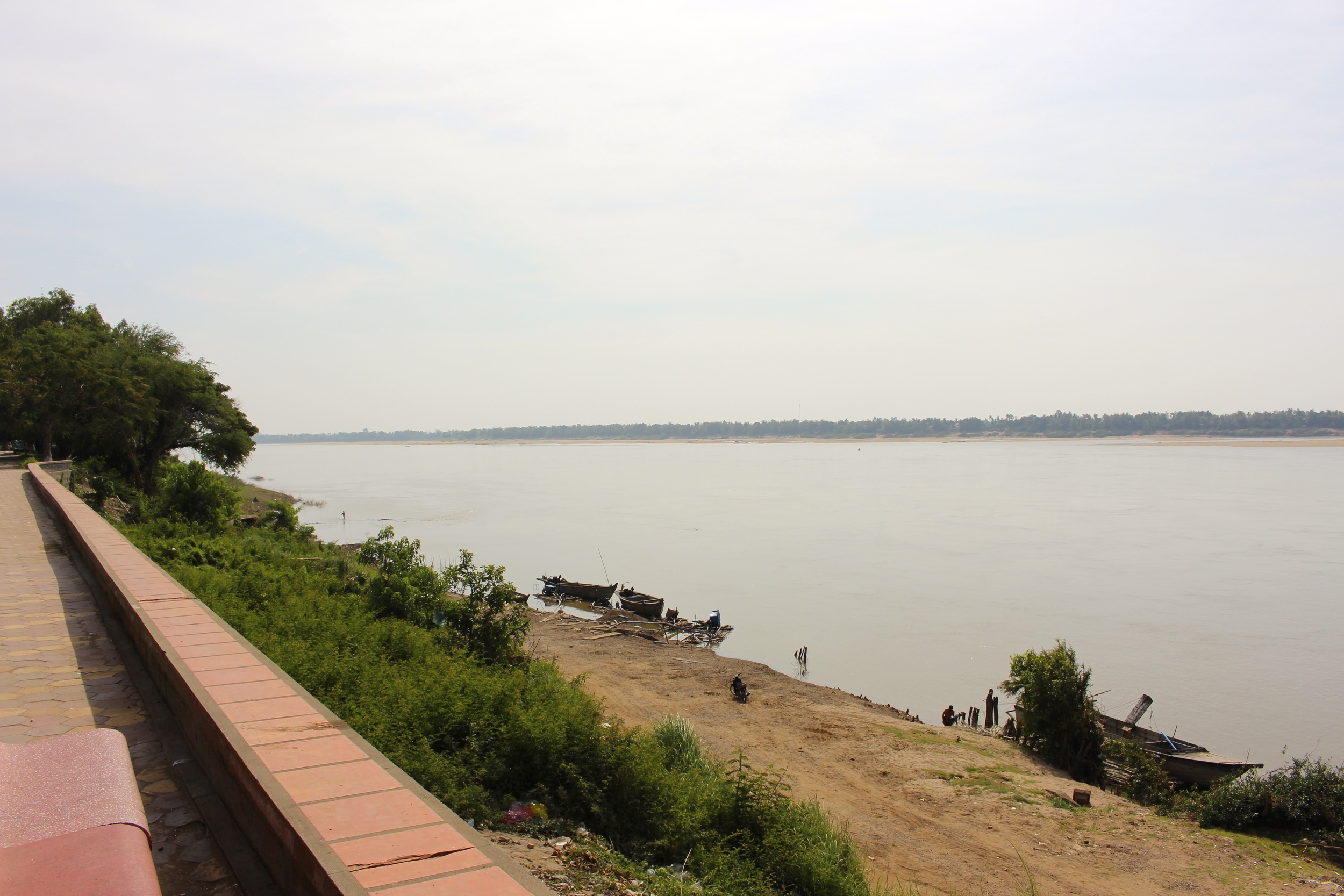
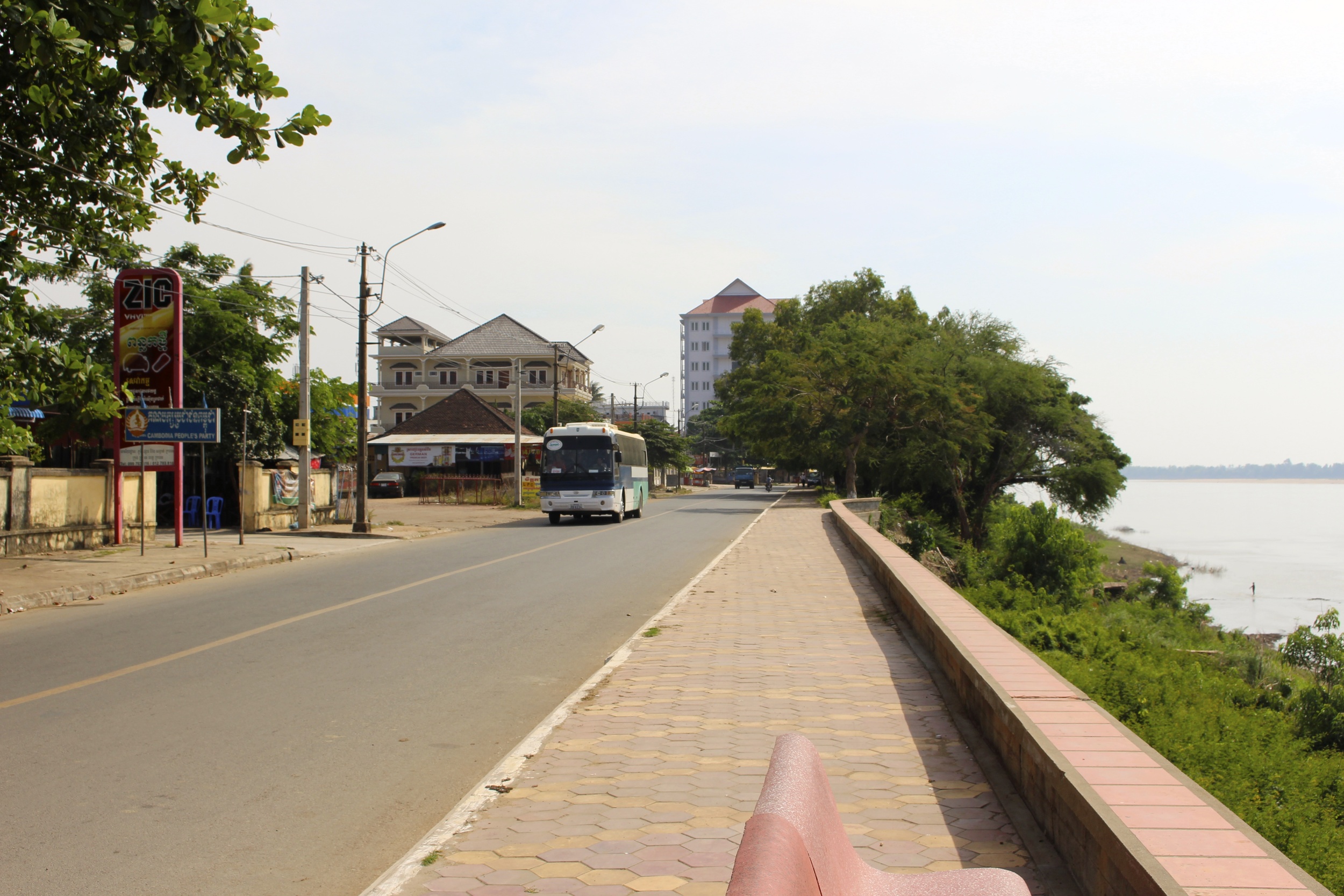
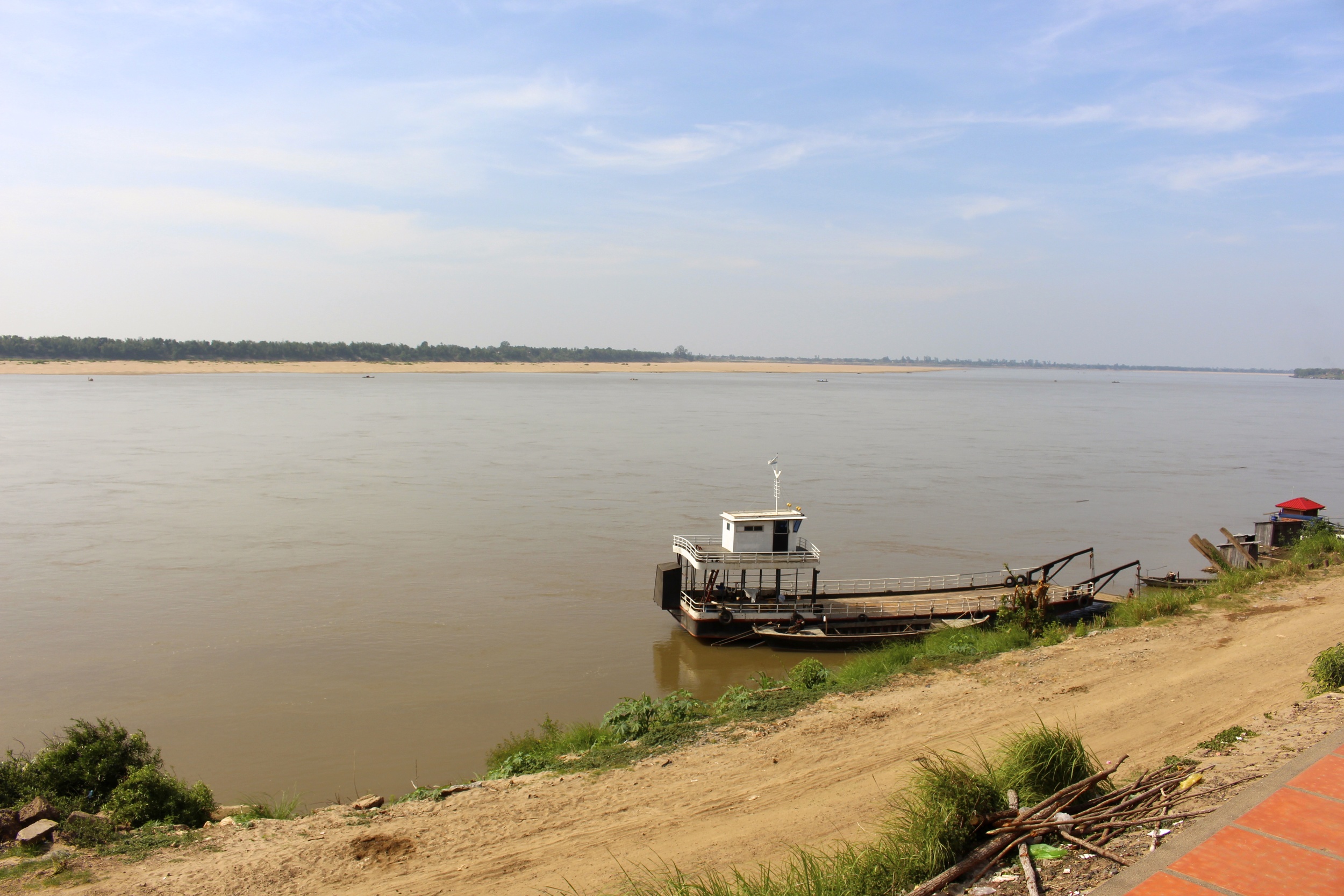
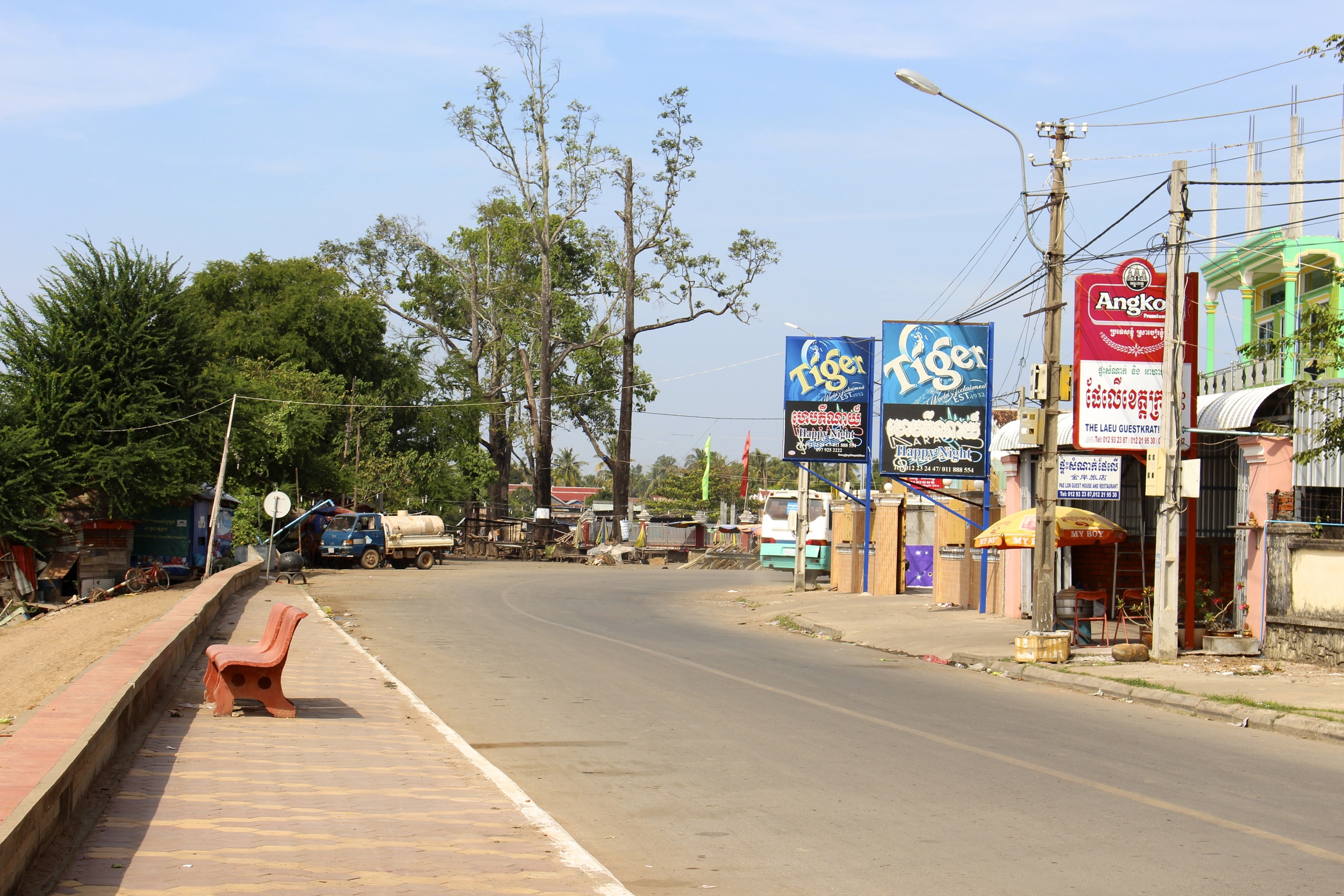
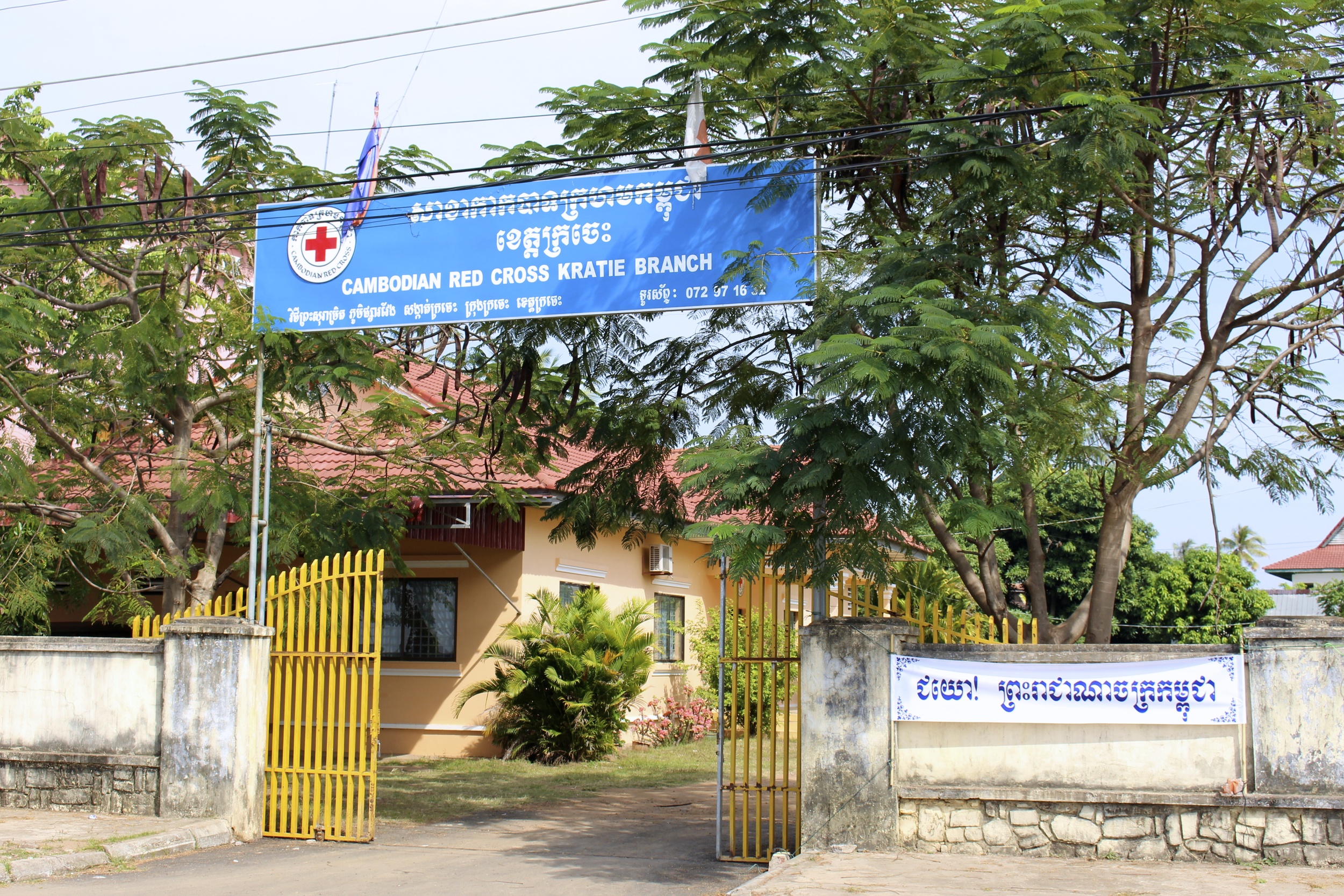
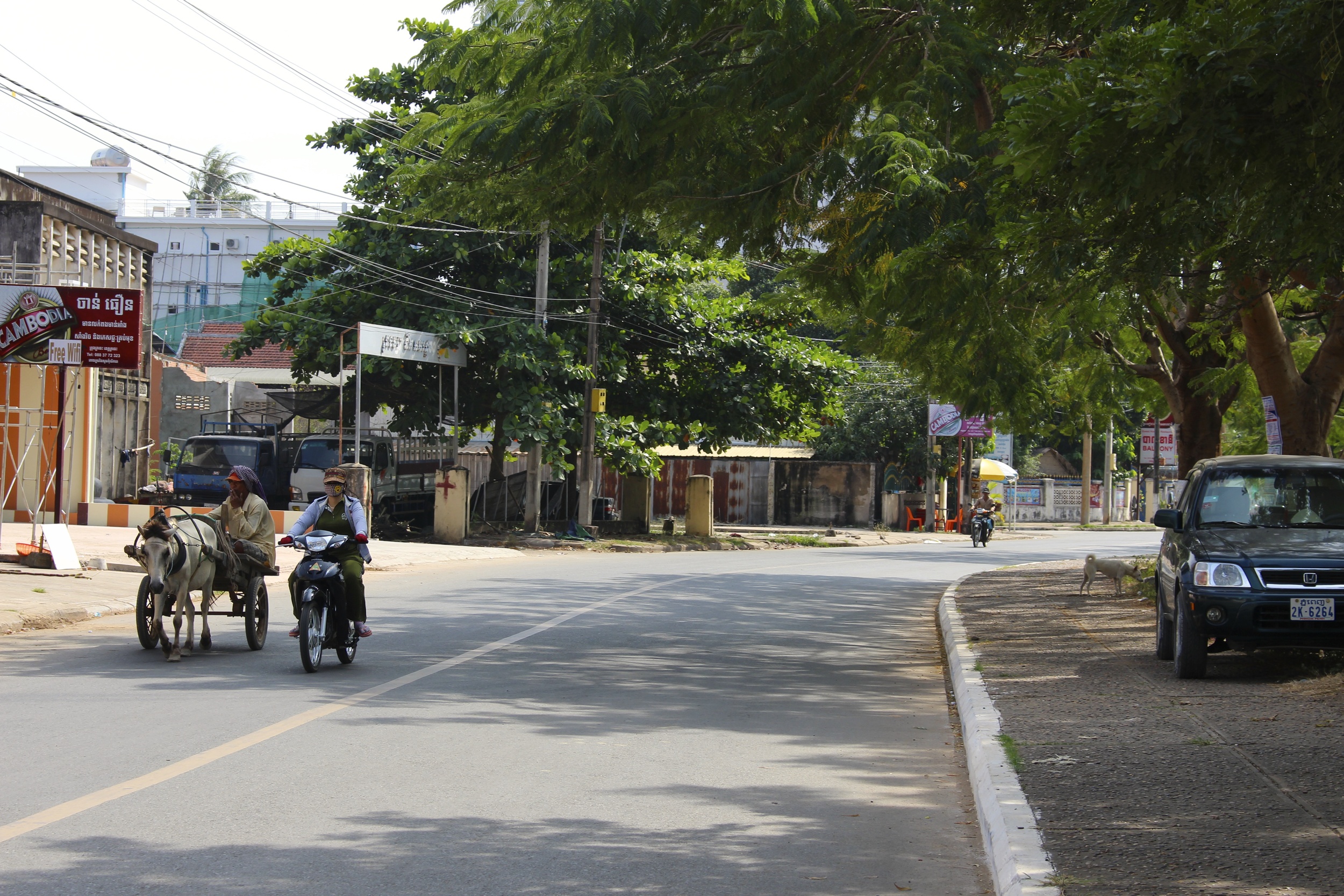
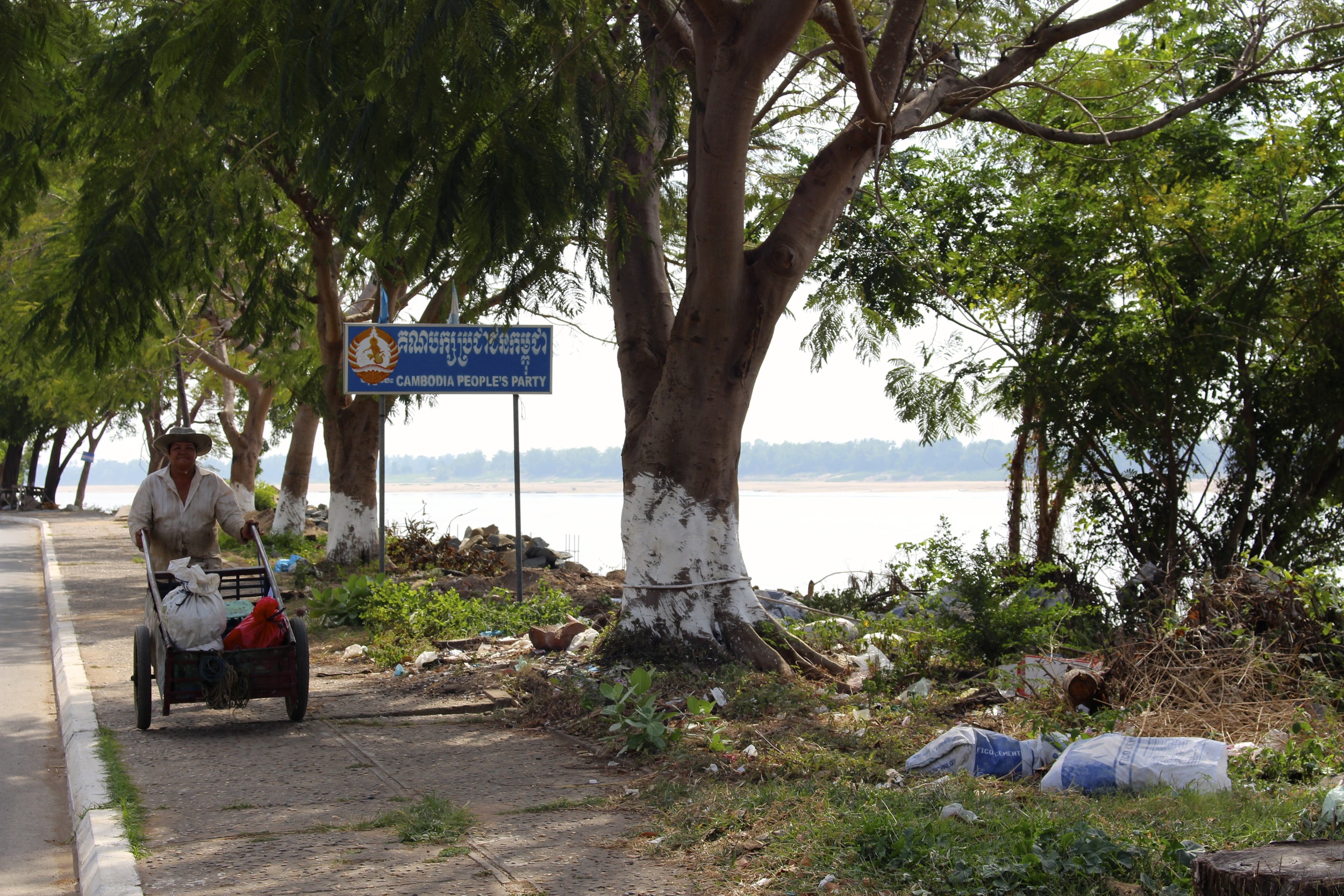
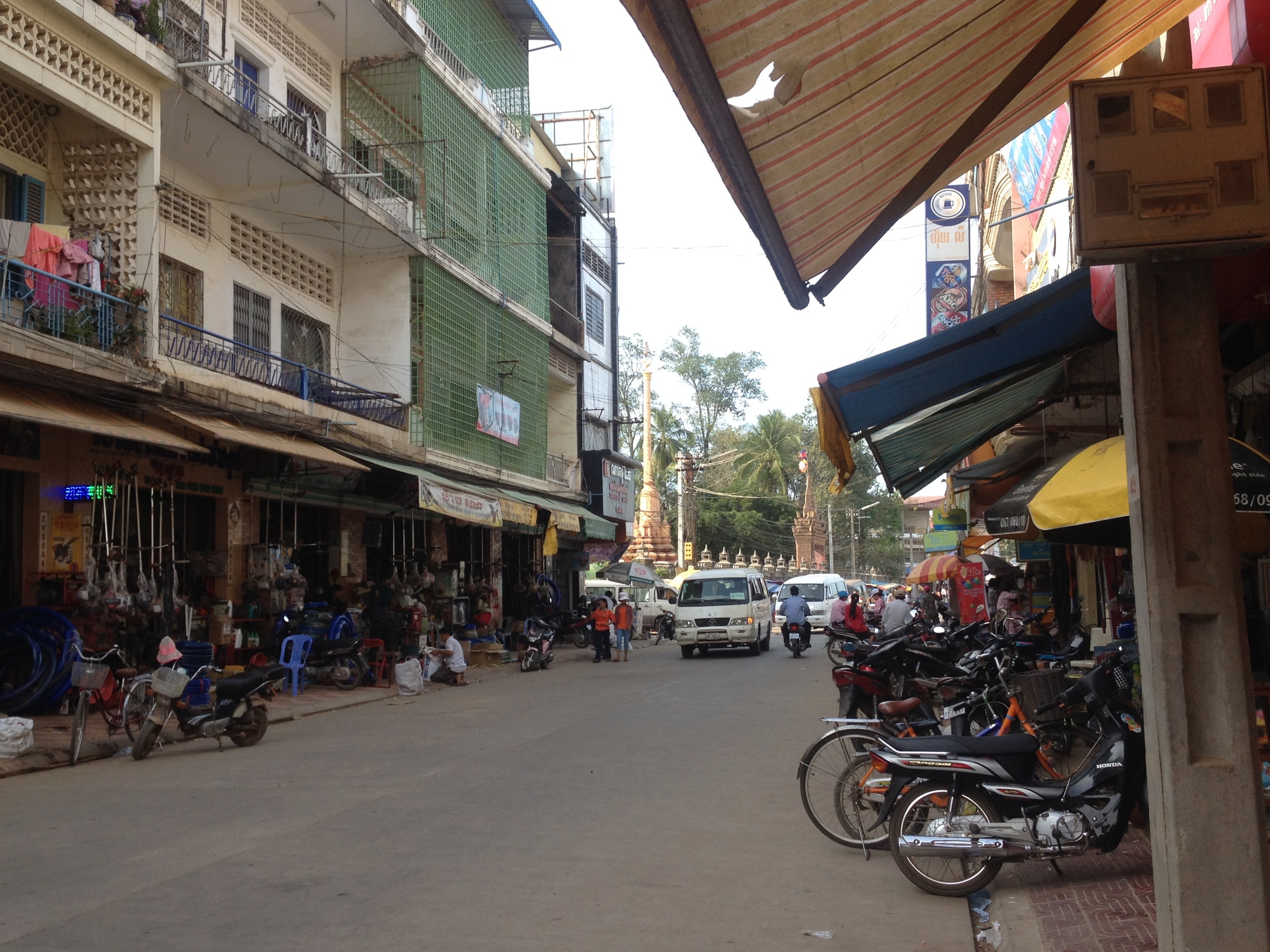

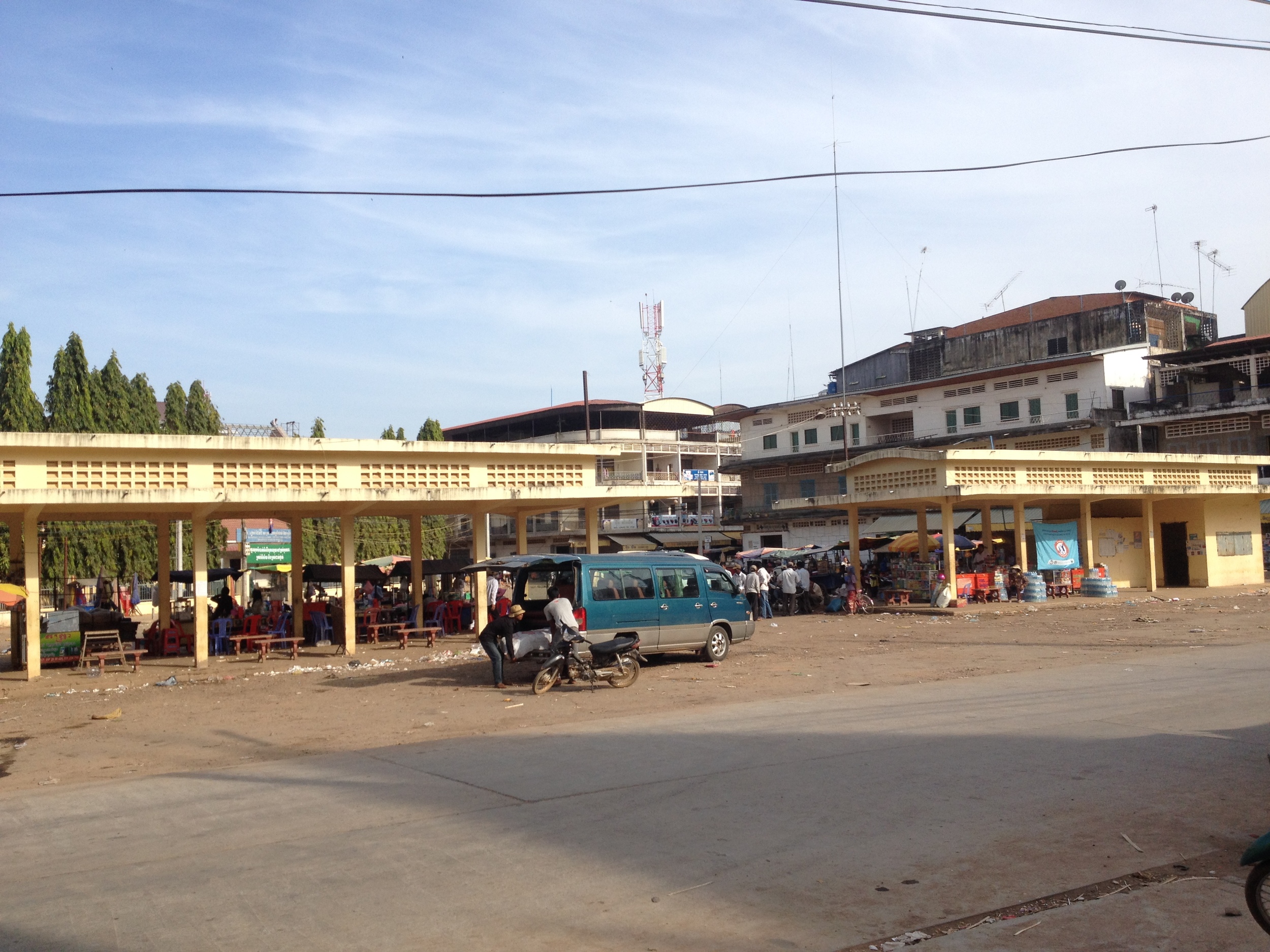
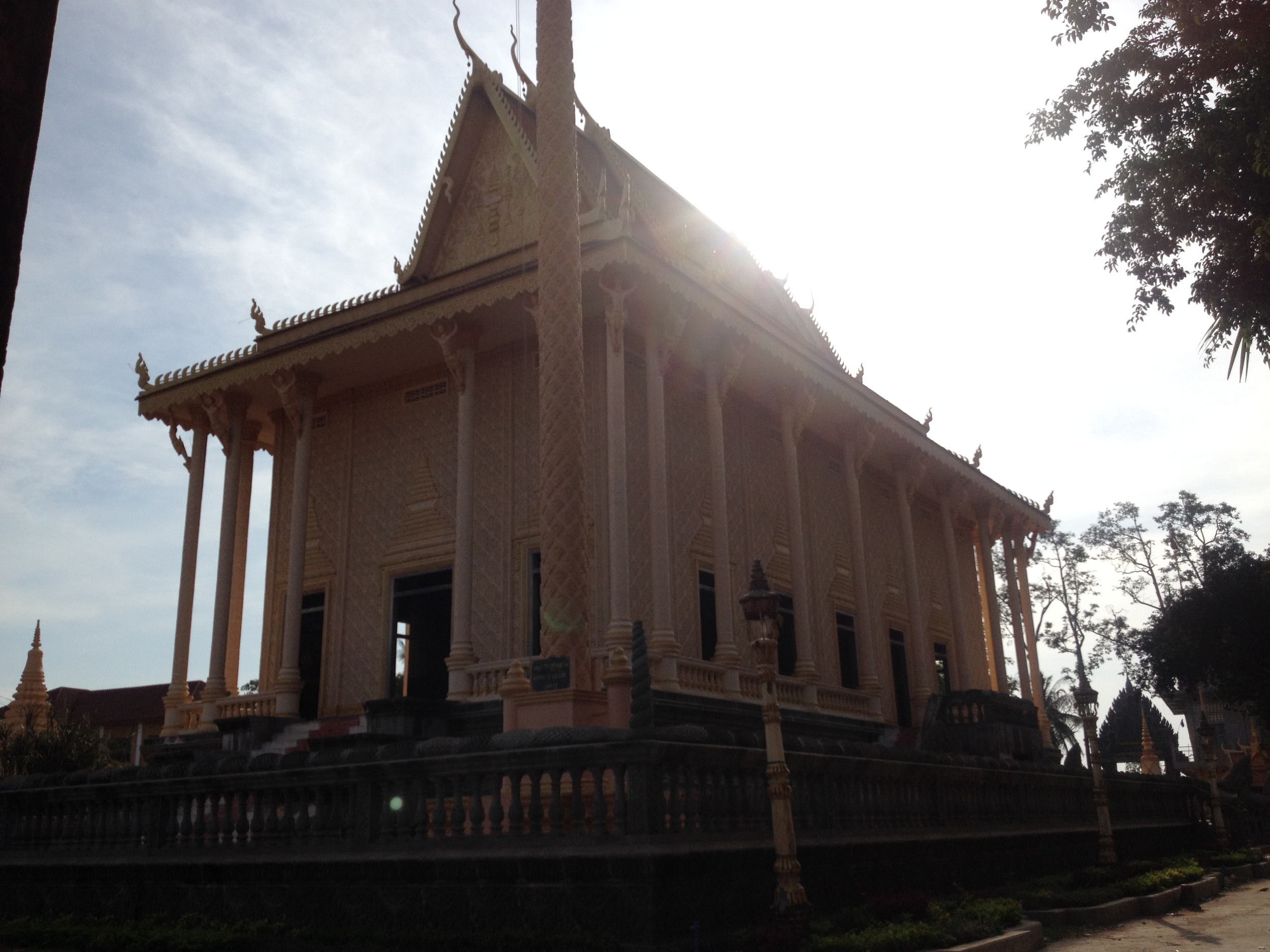
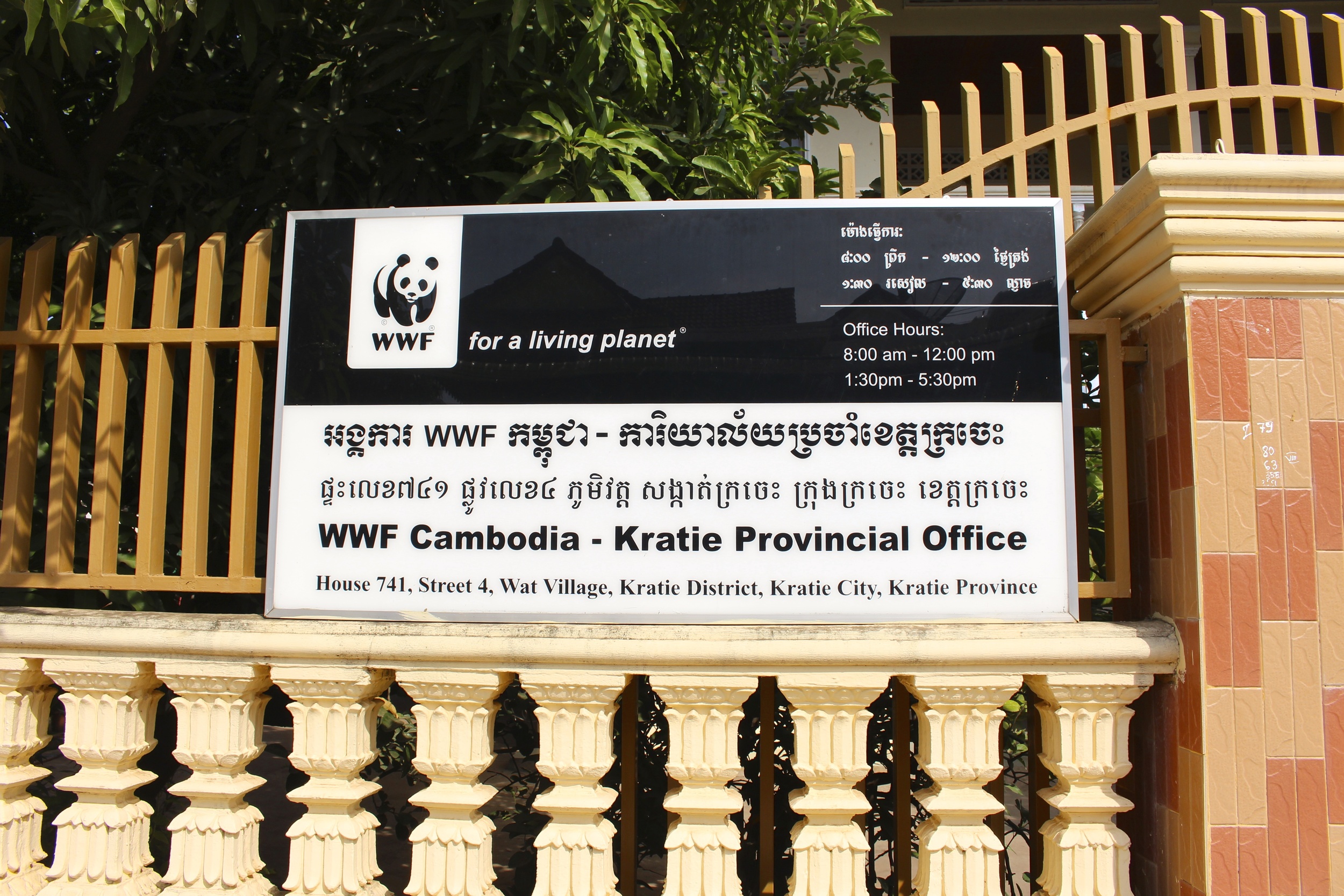

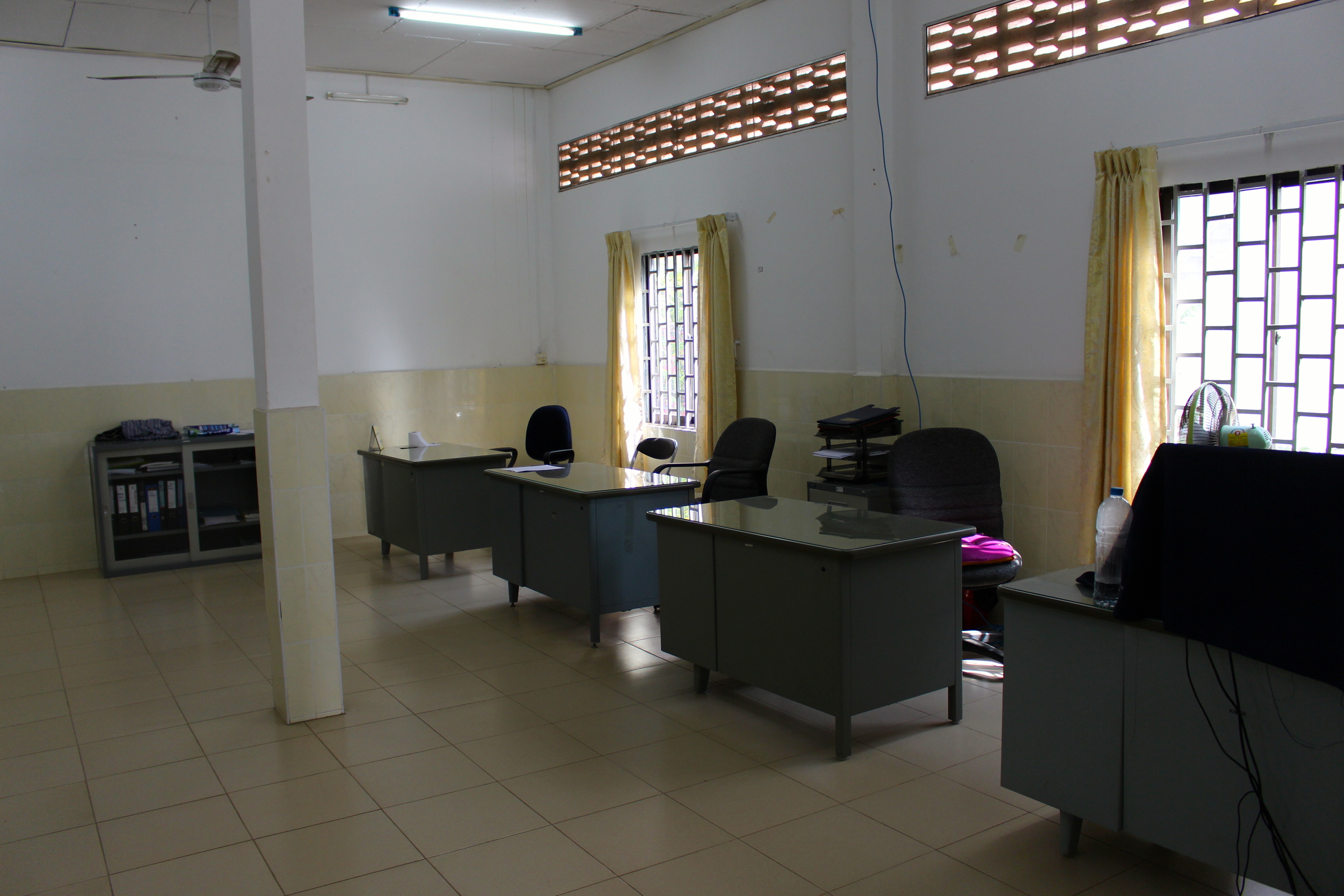
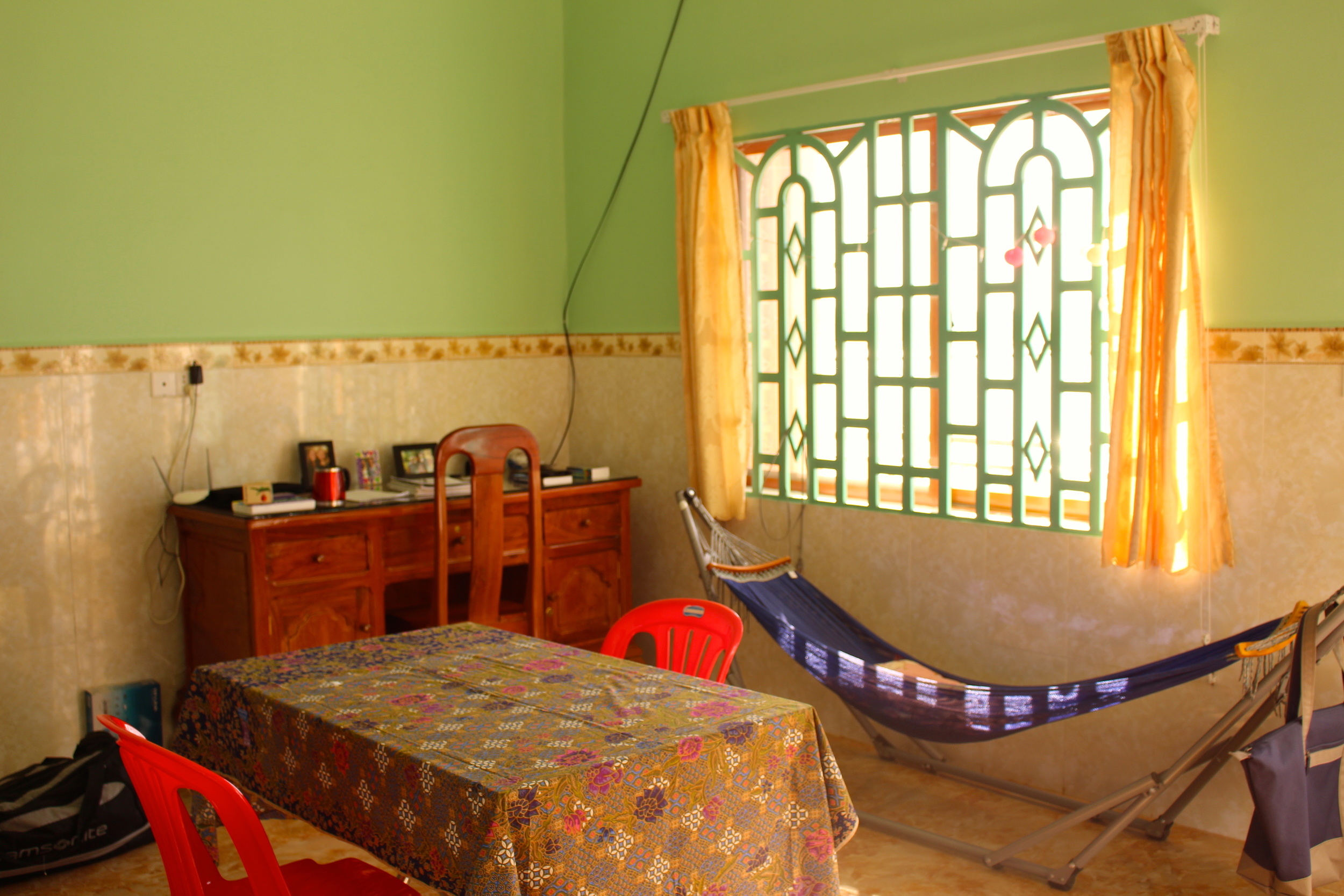
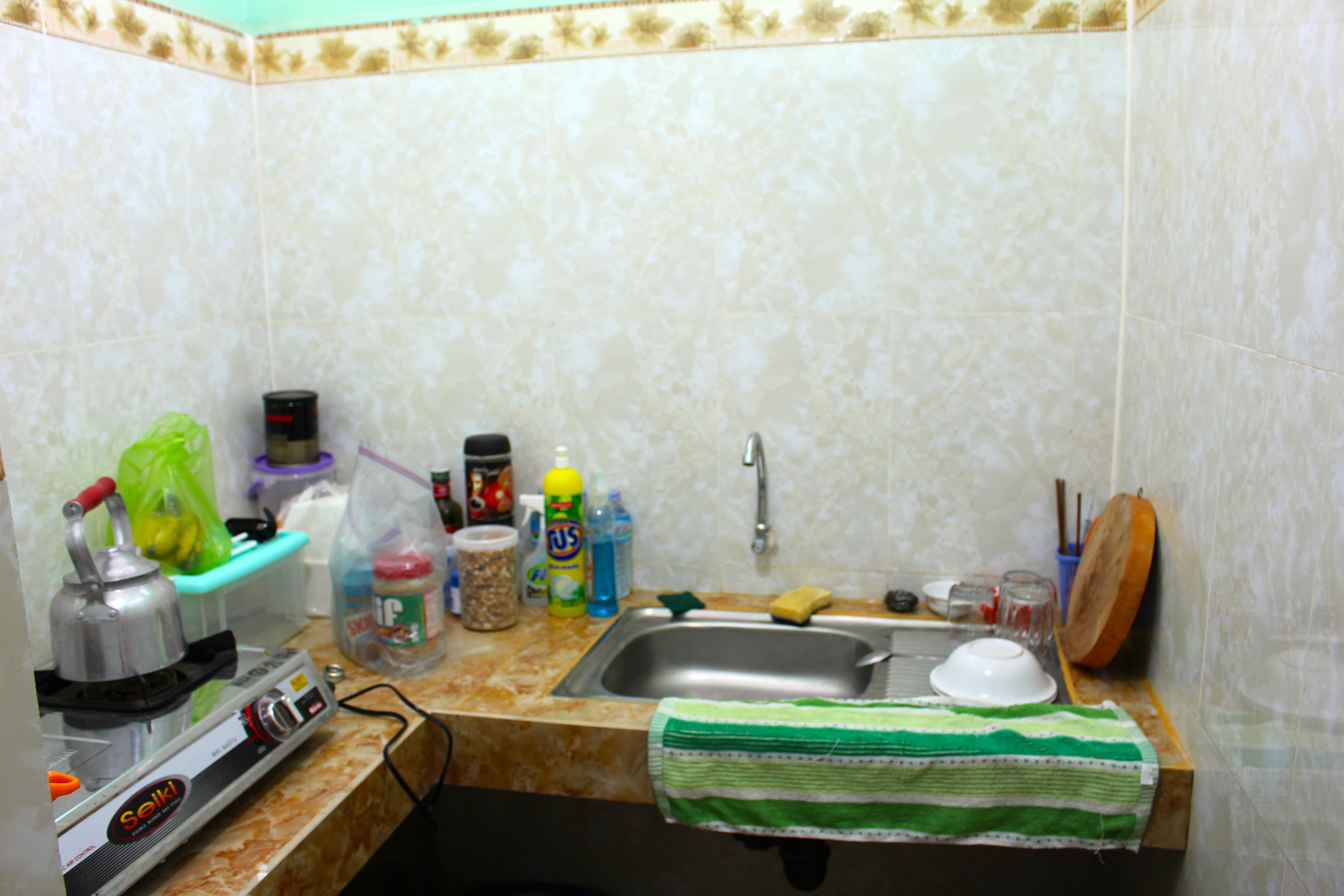

Turtles, pagodas, and more dolphins
This pretty much sums up my past weekend. Rather than getting some much needed work done Kratie’s WWF Landscape Manager, Saber Masoomi, and I decided to visit a couple pagodas outside of town. First we stopped at Phnom Sambok. This small collection of pagodas and homes for Buddhist monks is perched on the only perceivable hill for miles. We climbed a long set of stairs and found several beautifully painted pagodas and multiple statues of Buddhas. Afterward we traveled north to Sam Bor District to visit Vihear Sarsar Mouy Rouy “Temple with 100 columns”. This pagoda dates back to the 16th century and was built by King Chann Reachea in memory of his daughter who legend has it was eaten by a magic crocodile (may or may not have heard this correctly). When I entered the pagoda I noticed everyone was paying the monks to light incense. I awkwardly tried to copy everyone else, but essentially gave up trying to look like I knew what I was doing when they started a sequence of praying/bowing.
Vihear Sarsar Mouy Rouy
Cantor's soft-shell hatchling
I also was pleasantly surprised to find the Mekong Turtle Conservation Center on the same grounds as the pagoda. The MTCC is run by Conservation International and aims to conserve Cambodia’s endangered population of Cantor’s giant softshell turtle. This species used to range throughout Southeast Asia, but populations have all but disappeared throughout Laos, Vietnam, and Thailand due to overharvesting and habitat destruction. The population inhabiting the section of the Mekong River in Cambodia was only discovered in 2007. The MTCC is working to increase the population by “headstarting” turtle hatchlings or releasing them after a 10-month period. The MTCC guide enthusiastically pulled multiple turtles out of their tanks for me to see. At one point she placed one precariously on the ledge of a tank and let me feed it a tomato.
In total our little trip to the pagodas ended up being roughly 50 miles by moto. I like riding on the motos because it allows me to view more of the countryside, but at certain points of the ride I simply had to close my eyes. There are no traffic rules on these roads and trucks will often barrel by not allowing the moto any room at all. Saber seemed to have no problem with this, however, and was happy to honk and veer past anyone who was in our way. I mentioned I wanted to learn to drive a moto so Saber let me try. For those who have not ridden a moto (I’m clearly the minority here in Cambodia) the throttle is on the handle. I can’t for the life of me figure out how people stay at one constant speed. Needless to say I drove the moto about 500m and then promptly revved the engine and almost crashed.
On Sunday I met two young women who worked at the WWF office in the U.S. Courtney works on WWF’s Freshwater Program and coordinating their field programs while Annika works on forestry management, often in conjunction with the Forest Stewardship Council. They were on vacation traveling throughout Southeast Asia and had called the week before inquiring about how to book a dolphin tour. We got to talking and they decided to stay at my apartment and we went on the dolphin tour together. It was fun to show someone where I was working and I was happy to be out on the water without feeling like I needed to be “researching”. Overall I was thrilled to have English-speaking guests and also learn about various projects at the WWF U.S. office. All in all a pretty good weekend.
Irrawaddy dolphin calf
Everyday exchanges
So after about a month in the country I realize it’s the little exchanges and interactions I have throughout the day that I really wish someone else could witness with me. Whether it’s me encountering a new situation or making some sort of silly mistake, I’ve found myself stepping back and laughing multiple times (or at least laughing later).
For instance, my landlord who lives below me seems to be incredibly nice and accommodating. However, he only speaks Khmer and I know roughly 20 words in Khmer. This has not stopped us though from trying to discuss various aspects of my apartment. Yesterday we had a “conversation” about the screens on my window to keep mosquitoes out. The conversation (and others) went something like this; my landlord rattled on in Khmer making sweeping motions with his arms while I repeatedly told him I didn’t quite understand and just kept pointing at the window so at least he would know what I was talking about. As for this conservation, I later figured out he was merely trying to tell me someone would come tomorrow to install the screens. Note to self – work harder at learning Khmer.
I also would like to learn more about the Khmer culture BEFORE I make a mistake and have someone correct me. I knew you were supposed to use the traditional Cambodian greeting, Som Pas, putting your hands together and slightly bowing your head, especially when greeting elders. I was proud I had remembered this when I was introduced to an elderly woman whose house we were staying at on the survey trip. However, Gerry (a member of the WWF staff) explained I held my hands very low which is considered impolite and they should be up toward my face for someone of that age. I also learned when you hand someone an object it’s polite to do it with both hands or your right hand. I am left-handed and thus obviously was doing the opposite.
Also, I wish someone could witness the interactions I have had with the “wildlife” IN my apartment. For starters, after living in Beaufort, NC I should obviously be used to cockroaches. Unfortunately, I am not and even though I knew there would be bugs here, I was dismayed to find a huge dead cockroach in the hallway upon my arrival. The other day I went to sit and eat my expertly prepared dinner of Cambodia’s version of ramen noodles, and realized there were some bugs on my desk. I went to clean them off, but first looked up and realized several hundred had gathered around the light bulb above the desk. That same night I was stepping out on my porch to get my laundry on the drying rack when I noticed a gecko on the inside of the door frame. I gingerly tried to unlock the door to shoo the gecko out when I was startled by three kittens trying to push their way into my apartment. Just to remind you, I live on the second story of my building.
While I know I simply need to adjust to geckos and some bugs in my apartment, I don’t anticipate on adjusting to cats dragging rats inside open air restaurants and killing them which happened the other night. Thankfully I didn’t notice what was going on at the time and wondered why the girls next to me were making such a big deal about a cat being inside the restaurant.
All in all, I am absolutely ok with making mistakes regarding understanding the culture and language because that’s how you actually learn (I’m only slightly ok with the bugs), but do wish someone could join in and laugh with me at times in these situations.
Rollin' on the Mekong
Yesterday afternoon our team of seven including WWF staff and officials from the Cambodian Fisheries Administration returned back to Kratie after the ten-day survey trip along the Mekong River. As I’ve only been in Kratie for a total of five days I’ll wait to write about the town once I’ve gotten to know it a little better. This likely will not take long as it’s quite small, but for now I wanted to describe my first day in Kratie and the subsequent survey trip.
As we were driving to Kratie from Phnom Penh (a slightly harrowing 4-5 hour drive), the WWF Landscape Manager received a phone call that an adult female dolphin had been found dead near the Kampong Cham province in Cambodia. Arrangements were quickly made to transport the dolphin to Kratie via taxi so that a necropsy could be conducted the next day. Conducting necropsies on these animals as soon as possible after death is critical in order to improve the understanding of causes of mortality and in general the understanding of the life history of these animals.
So for my first day “on the job” I arrived at the office to the WWF staff taking various measurements of the dolphin carcass. We then transported the animal to the lab where luckily I was only asked to write down the various samples collected rather than participate in the dissection given my minimal experience conducting necropsies. The team concluded the dolphin had likely been sick and died from old age, rather than being entangled in a gill-net which was good news.
Adult female carcass
Necropsy
The next day we departed from Kratie and began our trip up the river. Each day was fairly similar. We followed the main channel of the Mekong north, crisscrossing the river, all the while looking for dolphins. The WWF staff possesses extraordinary knowledge about which sections of the river the animals inhabit thus we typically knew when animals would be encountered. Once dolphins were located the staff (or I) would take photos of the animals. Because dolphins' fins often get marks or scars on them throughout their lifetime photos of their fins are used as identification tools. These surveys are very important because they allow WWF to obtain estimates of the population. Gerry Ryan, the WWF Research Technical Advisor in Kratie who has been my main point of contact over the past year, and his colleagues published the most recent population estimate in 2011 in the Ecosphere journal.
The one thing that struck me while watching these animals was their evasiveness and ability to disappear as soon as the boat approached. As I’m planning my research projects I believe this will be a significant challenge and we’ll see how I fare trying to interpret their behavior. I've included a terrible iphone quality video below, but hopefully can add better ones later.
Traveling on the river was an experience in and of itself. Its sheer size and power was pretty incredible. The river floods during the rainy season and inundates the surrounding forests creating this landscape where the trees are bent due to the power of the current and the root systems are incredibly dense. Although this is beyond nerdy, many of you all know I like Lord of the Rings, and these trees remind me a bit of the Ents in The Two Towers, slightly utopic and surreal.
For all but two of the nights we stayed with families in various homes along the river. Most of the homes are constructed of wood and are built on concrete pillars for when the river floods. We slept in hammocks like the one pictured, with nifty mosquito nets attached to them. Meals always consisted of rice. I asked one night how to say “eat dinner” in the Cambodian language, Khmer, and I was told that the word dinner isn’t really used, but instead to say “nham bai” or “eat rice”. In addition to the rice there was typically some kind of meat, veggies, and soup. This is clearly very general and I’ll be sure to write more about the different types of food I’ve been trying once I have a better understanding of what they’re called.
After arriving back in Kratie sufficiently tired and sunburned, but excited about finally seeing these animals and the river, I’ve started working on the methods for the research and trying to settle into my apartment and life in Kratie.
1 week down
I had a feeling I would be a bit slow to begin posting to this blog and, alas, I have confirmed that suspicion by posting a week after being in the country! I arrived on November 2nd after 27 hours of travel (with no delays, thankfully) and watching approximately 5 movies. I arrived late at night and by a small miracle and multiple phone calls between my Cambodian host and the driver, I made it to my host's apartment. Deborah Hanus, an MIT grad with a masters in computer science, also a Fulbright grantee, invited me to stay with her and the six Cambodian women who she is currently living with. Deborah will be investigating education and employment in Cambodia, specifically whether experienced based classrooms translate into increased employment. The six Cambodian women are either working in the city (one is an electrical engineer) or attending school (several to work in the health profession).
As this is my first time in any Asian country, my first week has been a bit of a barrage on the senses and in general difficult to describe, but I’ll just share a little of what I’ve experienced so far.
I woke up on Sunday morning to the roosters living close by (somehow managing to impressively sound like an entire zoo) and was eager to see the city in the daytime. The most immediate notable difference when I stepped outside was the traffic. I had been told it was unruly; people driving the wrong way on a street, disobeying light signals, and just generally chaotic. I had been in New York City a couple weeks prior and its traffic was nothing to what I’ve experienced so far in Phnom Penh. This picture does not do it justice, but you get the idea.
To get around the city there are two options: tuk-tuks or motodrops. Tuk-tuks are “carriages” attached to a moto and cost a bit more while a motodrop simply involves hopping on the back of a moto and riding to your destination. I've been amazed to see entire families (4-5 people) all balancing on one moto. The security briefing at the U.S. Embassy also warned us there are many deaths due to moto accidents, thus despite procuring a stylish mushroom shaped helmet, I have stuck to taking tuk-tuks thus far.
Tuk-tuk
Moto
I quickly realized the tuk-tuk drivers outside our apartment do not speak English and Deborah kindly lent me a map of Phnom Penh which I have used religiously each day. Although I haven’t done many tourist activities I walked along the riverside (where the Tonlé Sap drains into the Mekong River) and viewed the outside of the Royal Palace which I plan to tour at some point.
Meeting of the Tonle Sap and Mekong River
The Royal Palace
Deborah and I also ventured to the Russian Market which is only several blocks wide, but managed to get ourselves promptly turned around. Walking in you are immediately surrounded by shoes, clothes, bags, and jewelry from floor to ceiling. We walked a little further and encountered the food area with live fish flopping about, raw meat hanging from various stalls, vendors displaying fruits I’ve never seen, and people bustling around doing their daily shopping. Once I’m a little bit braver I’ll explore the market more and worry less about getting completely lost.
On Tuesday I met with the staff at the WWF office in Phnom Penh. After planning this trip for roughly the last year it was exciting to finally arrive and put faces with the names of those I had been emailing. The Conservation Programme Manager, Thibault Ledeq, explained the organization of the WWF Cambodia office and also the various regions and initiatives it focuses on. After a welcoming dinner the next night with the team I’ll be working with in Kratie, I felt like my work here was slowly starting to begin.
The last highlight from this week has been meeting the Cambodian women in the apartment I’m staying at. Each night Deborah has an English “lesson” with all of them. This lesson essentially consists of chatting about various topics and Deborah occasionally correcting their grammar or pronunciation. Last night involved talking about music and somehow we wound up introducing them to Backstreet Boys and NSync. Although I won’t be able to continue in this tradition (the lessons, not introducing them to bad pop music) as I’m leaving for Kratie, I think it is a great way for these girls to practice their English, and also for us to learn more Khmer (Cambodian language) and about Cambodian culture in general.
From the left - Chipon, Ratanak, Deborah, Lamphou, Chiva
Tomorrow (11/9) I will be traveling to Kratie where I will be based for the foreseeable future. Then November 12-21st we will be going on a survey trip which involves traveling up the Mekong River by boat all the way to Laos border and back. We will photograph the dolphin population as we go and add the photos to WWF’s current ID catalog. I’m unsure of the internet access I’ll have on the survey trip, but in the future I hope to post to the blog more frequently. Here’s to a good first week!

